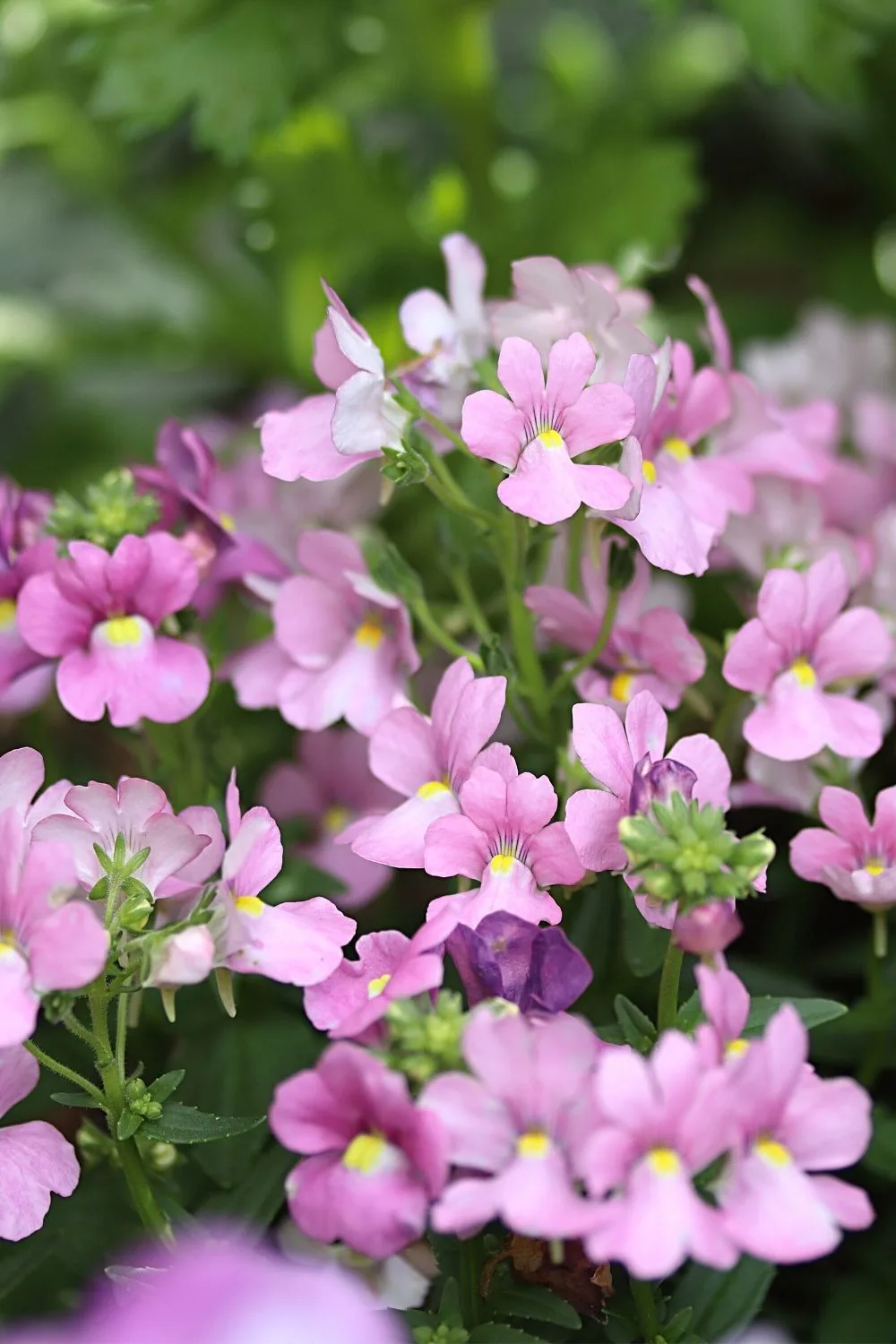East-facing balconies generally receive less light as compared to the south or west-facing balconies.
It is estimated that East-facing balconies receive between six to eight hours of sunlight each day, oftentimes between 8 am to 1 pm.
The benefit of placing your plant on an East-facing balcony is that it will be protected from the harsh afternoon sun.
Providing your plant with mild exposure to sunlight is beneficial for the plant’s health, but anything above mild exposure can only benefit some species of plants.
To grow plants suiting East-facing balconies, take a look at this list of potted garden plants that grow well on East-facing balconies.
30 Plants for East Facing Balcony
- Pansy
- Nemesia
- Daisy
- Oregano
- Daffodils
- Cosmos
- Verbena
- Petunia
- Lobelias
- Tomato
- Sweet Pea Vine
- Spinach
- Garlic
- Morning Glory
- Black-eyed Susan
- Bleeding Heart
- Clematis
- Rosemary
- Dwarf Conifers
- Mint
- Spring Onions
- Green Peas
- Ferns
- Basil
- Parsley
- Berberis
- Geraniums
- Desert Rose
- Carnation
- Bowl lotus
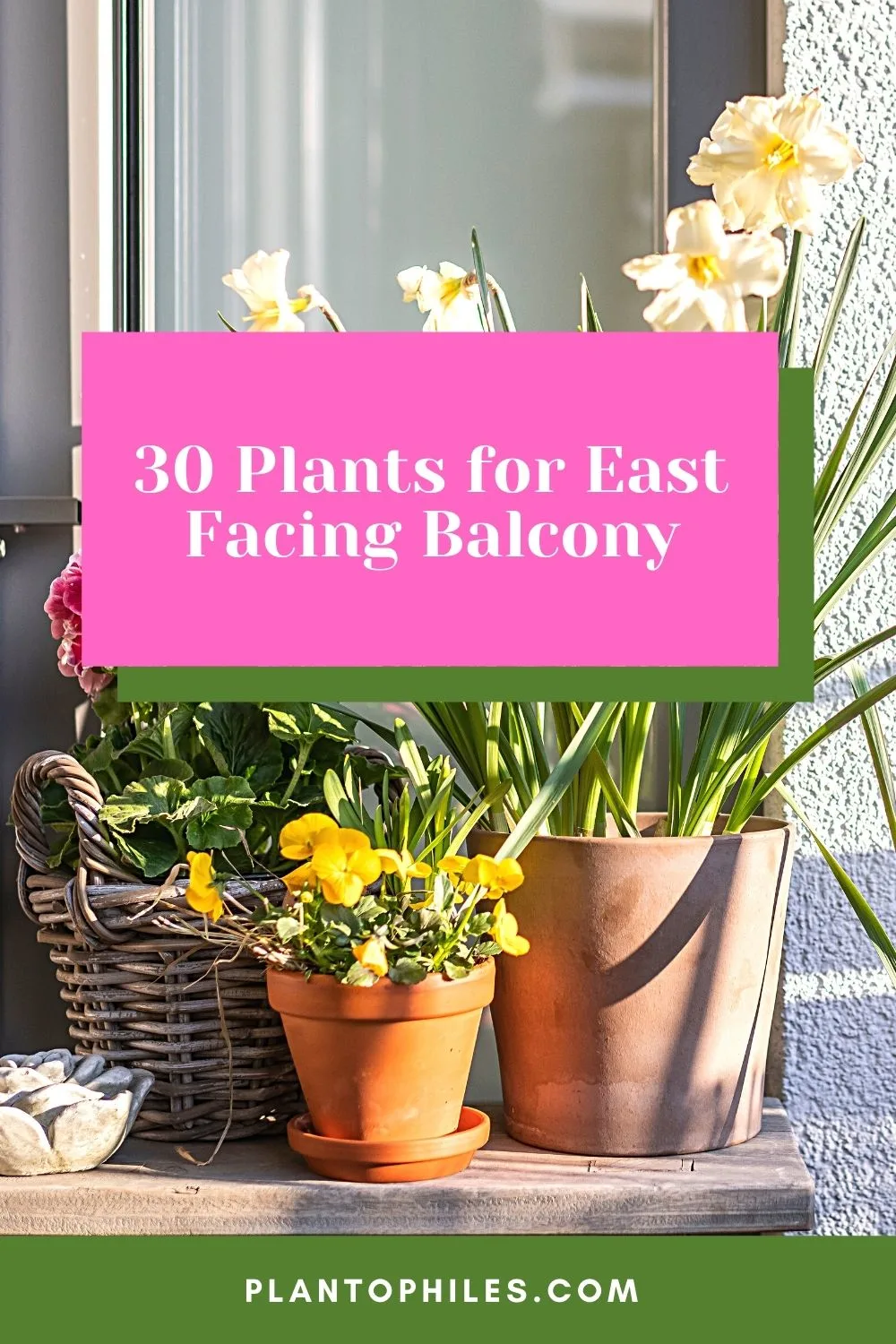
30 Plants for East Facing Balcony
Table of Contents
30 Plants for East Facing Balcony
1. Pansy
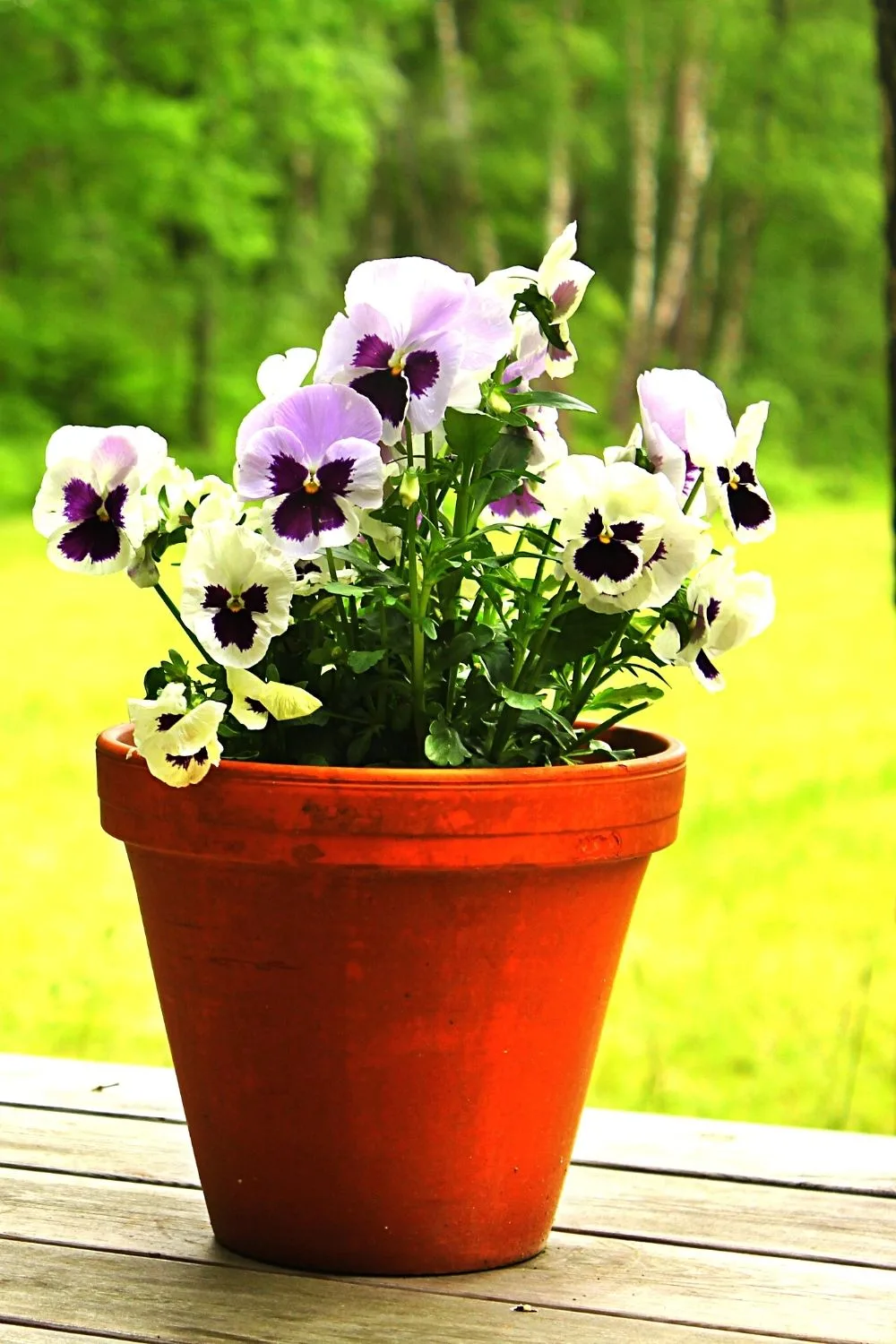
Commonly grown in gardens, Pansy can also be grown in pots on an east-facing balcony
Pansy belongs to the Violaceae family according to the University of Alaska and is one of the world’s largest-flowering hybrid plants that are most commonly grown in gardens.
Pansy grows 4-12 inches tall (10-30 cm).
While this plant is mainly grown in large gardens, it can even be grown on balconies within flower pots.
You will find this stunning flowering plant in various colors, such as:
- Blue
- Purple
- Yellow
- Pink
- Orange
- White
- Red
Its basic plant care requirements include:
- Scientific name: Viola tricolor var. hortensis
- Family: Violaceae
- Temperature: 45 to 65 degrees Fahrenheit (7-to-18-degrees Celsius)
- Fertilizer: Requires a slow-release/granular fertilizer during its growing season
- pH: 5.4 to 5.8
- Soil: Likes rich loamy soil that does not dry out completely
- Lighting: six hours of sun daily
- Growth rate: fast-growing
- Humidity: 40 to 50%
2. Nemesia
Nemesia is a short-lived perennial plant that is extremely easy to grow. This plant can be grown bushy and compact, which is why it looks stunning in pots that are kept on balconies.
Nemesia is mostly grown for its fragrant flowers that can be found in a variety of colors, such as:
- Red
- Pink
- Blue
- White
- Purple
- Orange
Its basic plant care requirements include:
- Scientific name: Nemesia
- Family: Scrophulariaceae
- Temperature: 70 degrees Fahrenheit and cooler (21 degrees Celsius)
- Fertilizer: fertilization is not needed for this plant
- pH: 5.5 to 5.8
- Soil: well-draining loamy soil
- Lighting: full-sun or partial shade
- Growth rate: fast-growing
- Humidity: 40 to 50%
3. Daisy
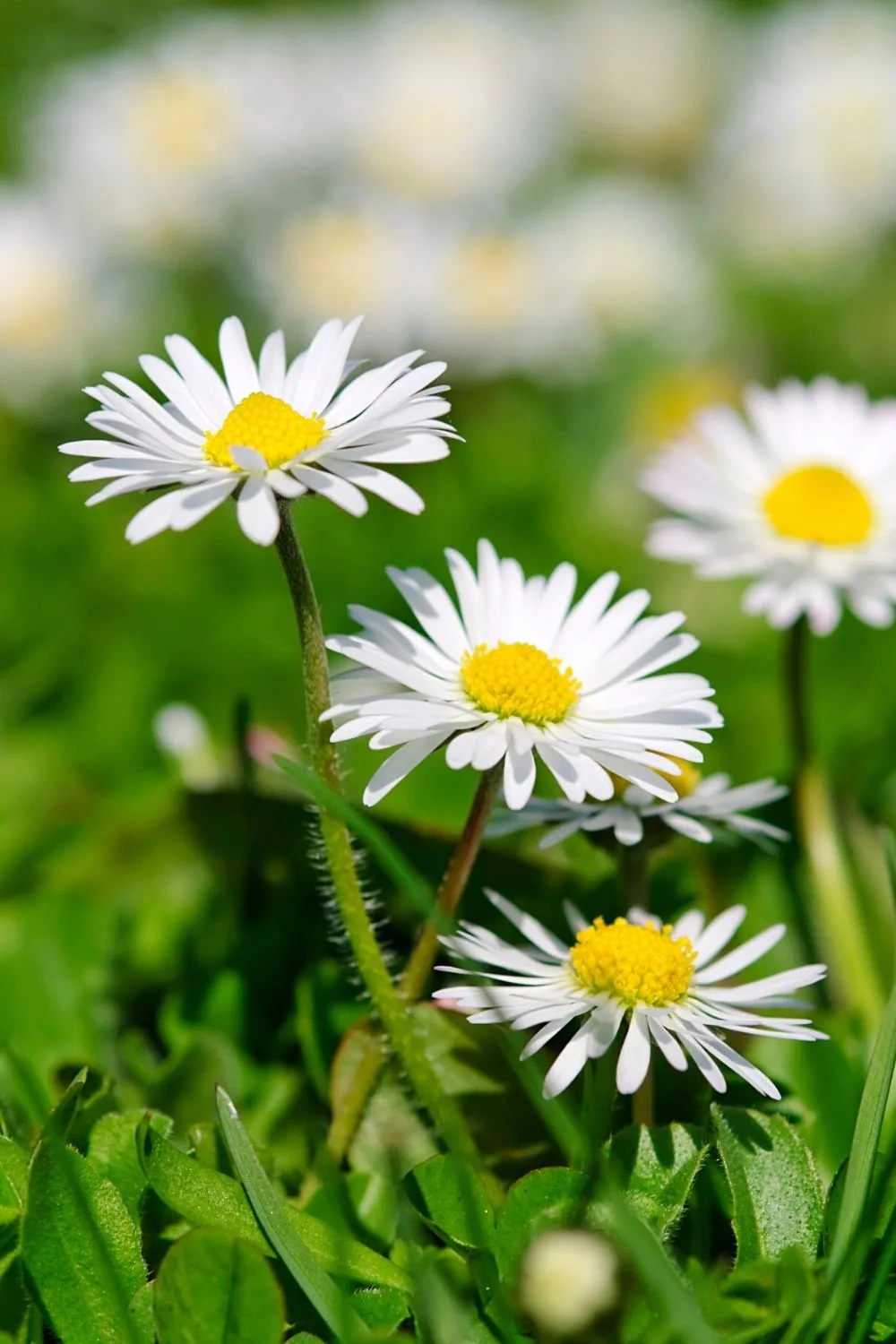
Daisy, aka the Common Daisy, is a flower you can grow on your east facing balcony
The Daisy plant, otherwise known as Common Daisy, is an herbaceous perennial which is often considered a weed in lawns.
However, Daisies are the perfect choice for planting on east-facing balconies as all their requirements for growth are met.
Daisies are grown in a variety of colors ranging from pink to red. Its basic plant care requirements include:
- Scientific name: Bellis Perennis
- Family: Asteraceae
- Temperature: around 50 to 75 degrees Fahrenheit (10 to 24 degrees Celsius)
- Fertilizer: needs fertilizer from spring to early part of summer
- pH: 6.0 to 8.0
- Soil: cool, moist, and fertile soil
- Lighting: full-sun
- Growth rate: fast-growing
- Humidity: average 65%
4. Oregano
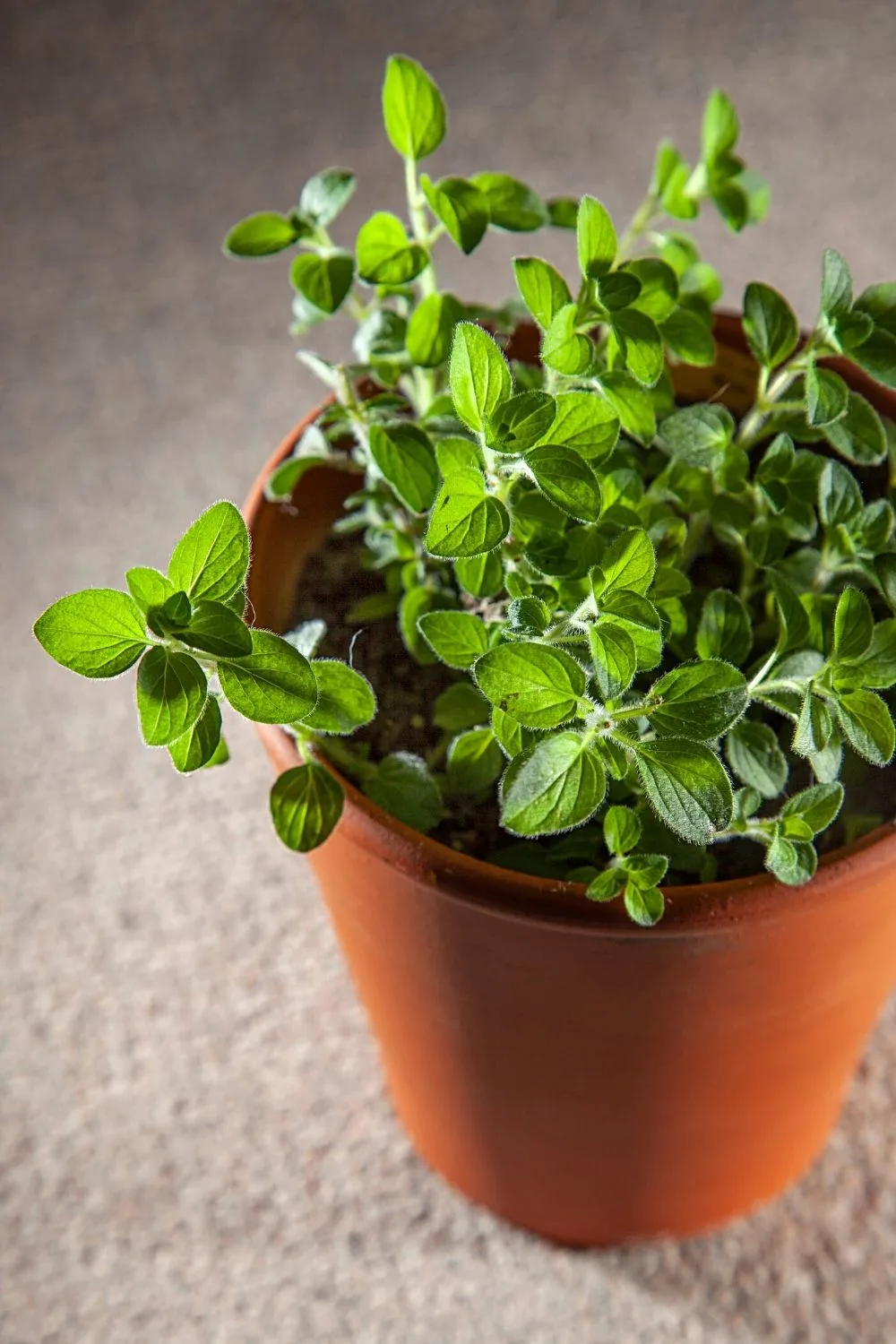
Oregano is a common herb added to food that you can easily grow on your east facing balcony
Oregano is a common herb used in foods. This flavorful plant has stunning dark olive-green leaves and purple flowers.
Oreganos are not grown for their flowers since most people grow them to add them to their favorite dishes.
The flowers on this plant are known to take away much of the flavor from the leaves.
The oregano’s basic plant care requirements include:
- Scientific name: Origanum vulgare
- Family: Lamiaceae
- Temperature: 18-21 degrees Celsius (65-70 degrees Fahrenheit)
- Fertilizer: needs fertilizer once during the summer season
- pH: 6.5 to 7.0
- Soil: well-draining soil
- Lighting: full-sun
- Growth rate: moderate growth rate
- Humidity: less than 75%
5. Daffodil
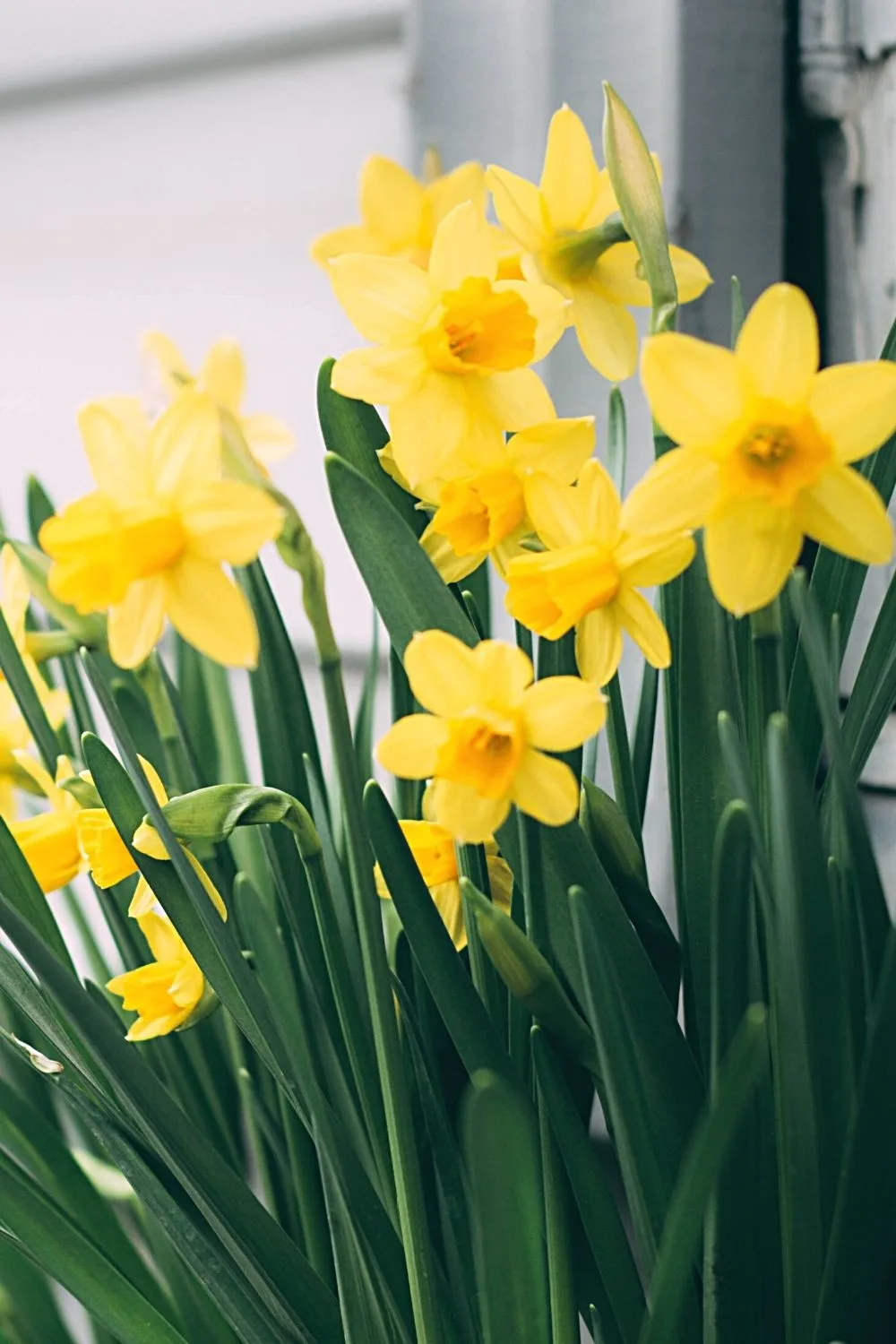
Daffodils are easy-to-grow plants that you can grow on your east facing balcony
Daffodils are one of the easiest plants to grow within pots as they require minimal attention. This beautiful flowering plant grows in all shapes and sizes.
Daffodils predominantly grow during the spring season but can also bloom in early summer.
Its basic plant care requirements include:
- Scientific name: Narcissus
- Family: Amaryllis
- Temperature: 16-32 degrees Celsius (60-90 degrees Fahrenheit)
- Fertilizer: needs fertilized in early spring
- pH: 6.5 to 7.0
- Soil: well-draining, loose, loamy, and fertile soil
- Lighting: full-sun to partial shade
- Growth rate: moderate to slow growth rate
- Humidity: 40% to 50%
6. Cosmos
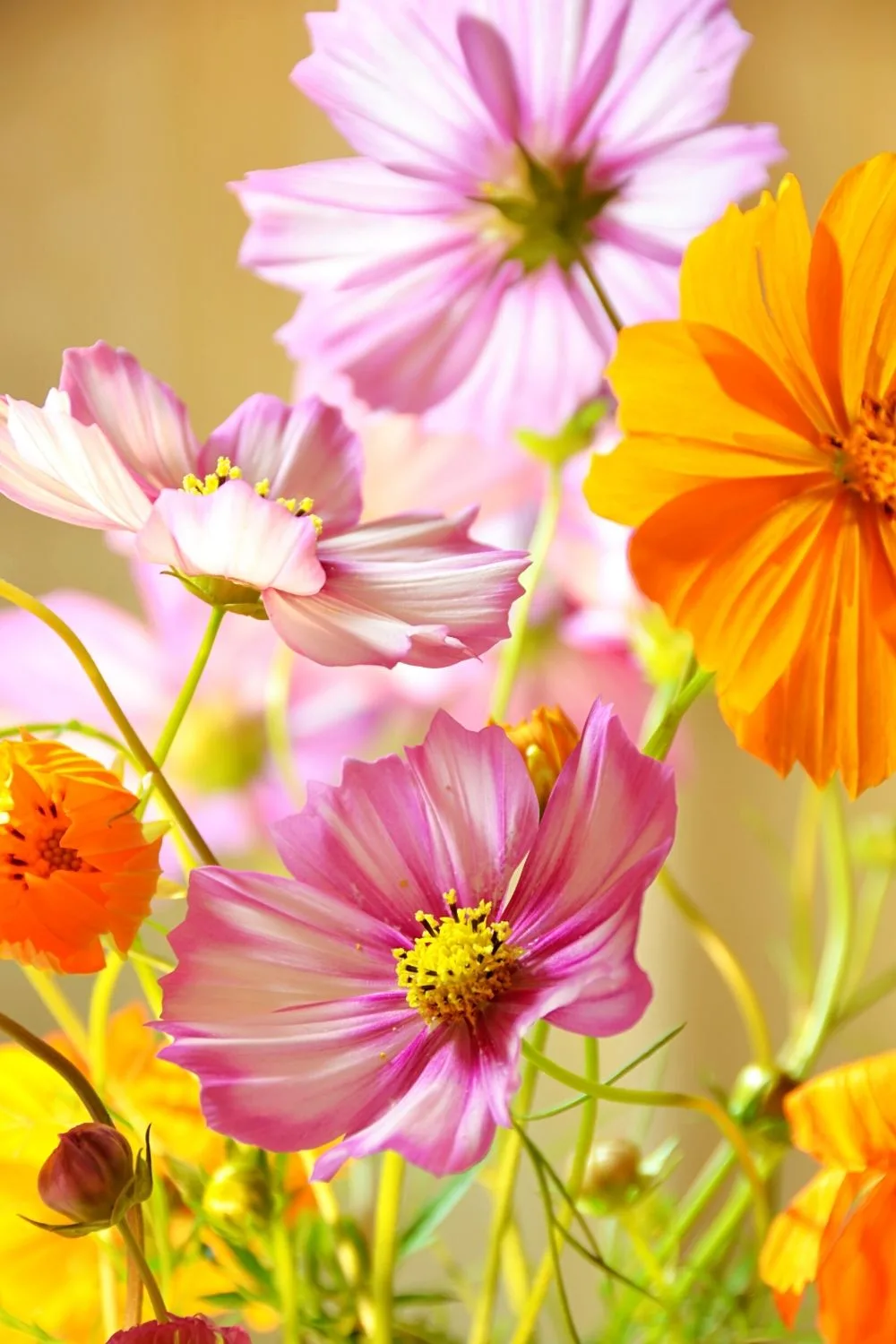
Cosmos, part of the Sunflower family, is a beautiful flower you can grow on your east facing balcony
Cosmos is another beautiful flowering plant that is part of the sunflower family.
The flowers on this plant can be found in various colors as well, such as:
- Orange
- Pink
- White
- Yellow
- Purple
- Maroon
Cosmos do not flower every year and require intensive care in order to bloom again.
The easiest way to make your Cosmos plant bloom again is to resow the seeds in the following spring season.
Its basic plant care requirements include:
- Scientific name: Cosmos
- Family: Asteraceae
- Temperature: 60 degrees Fahrenheit and above (16 degrees Celsius)
- Fertilizer: Needs to be fertilizer every three to four weeks until the flowering season
- pH: 6.5 to 7.0
- Soil: well-draining
- Lighting: full-sun to partial shade
- Growth rate: fast to medium growth rate
- Humidity: any humidity level
7. Verbena
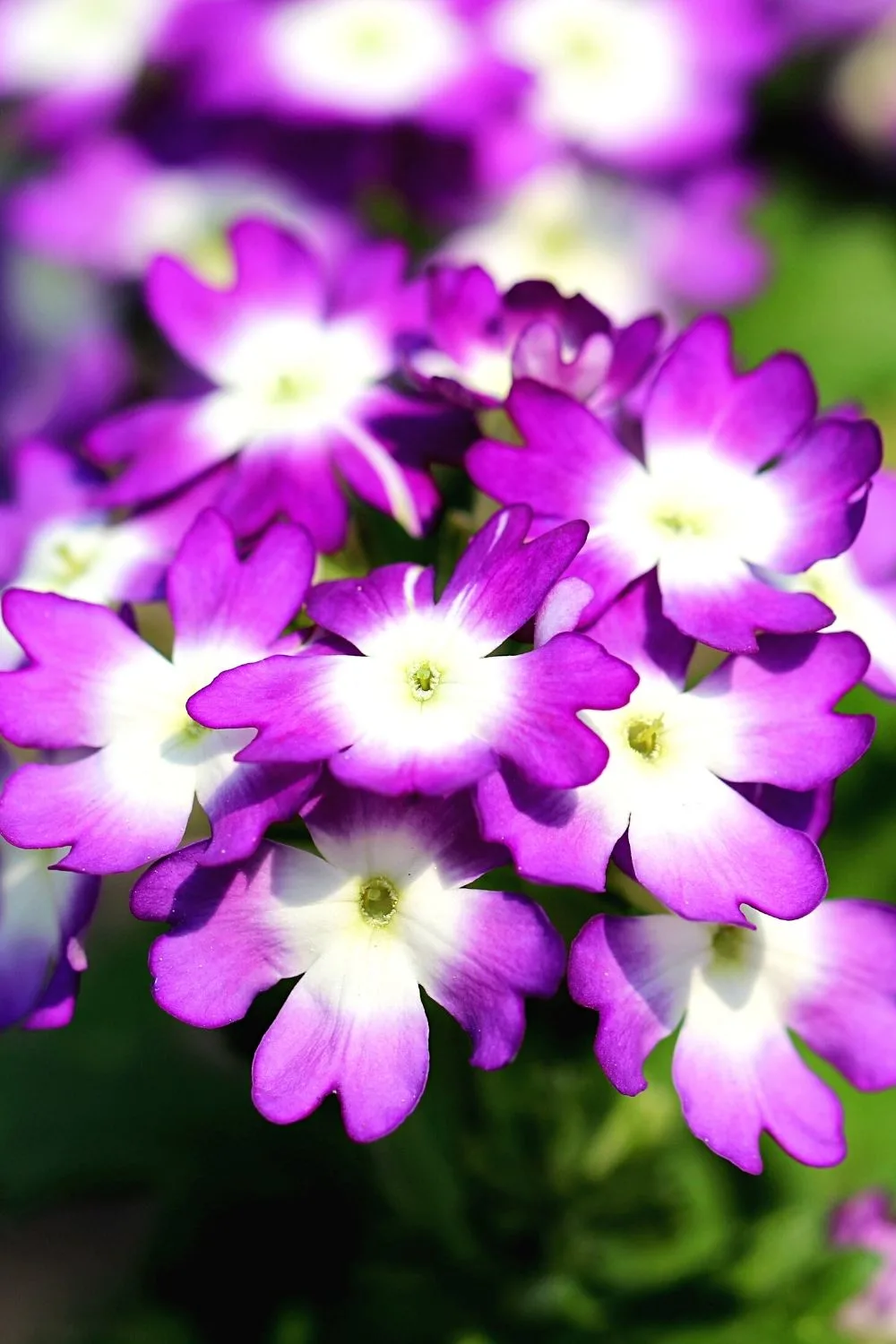
Verbena is a purple-colored plant that’s commonly used to treat respiratory diseases, can be grown on an east-facing balcony
Verbena is a vibrant, purple-colored flowering plant that is known to be used for respiratory tract diseases such as asthma.
This plant can survive the hottest summers days and will continue to bloom during the summer season as well.
Its basic plant care requirements include:
- Scientific name: Verben, Vervain or Verveine
- Family: Verbenaceae
- Temperature: 65 to 85 degrees Fahrenheit and above (18-to-29 degrees Celsius)
- Fertilizer: Needs balanced organic fertilizer every two weeks.
- pH: 5.8 to 7.2
- Soil: well-draining
- Lighting: full-sun
- Growth rate: fast growth rate
- Humidity: 50% to 85%
8. Petunia
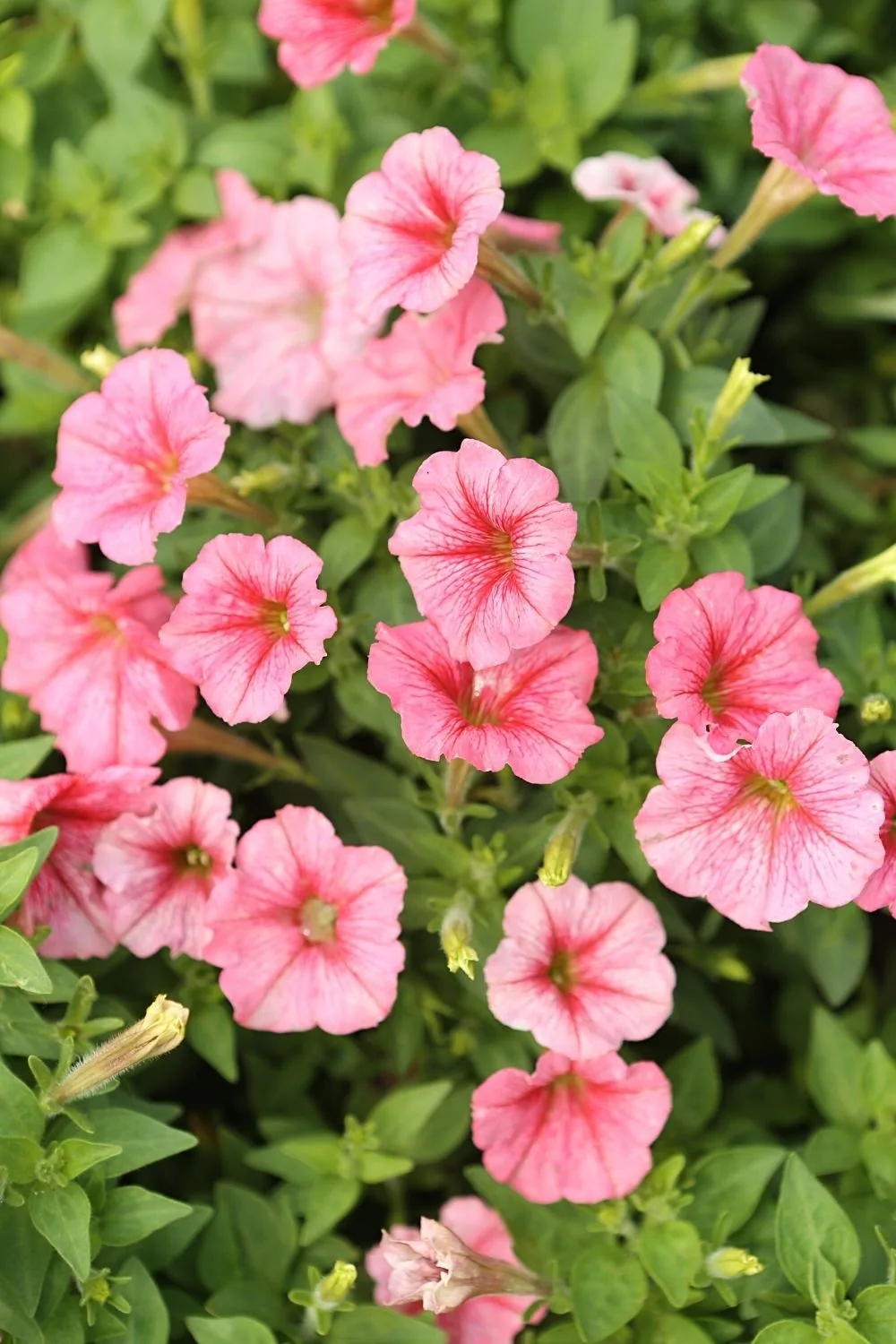
Petunia is a stunning yet low-maintenance plant that you can grow on an east-facing balcony
Petunia is a stunning flowering plant that comes from South American origins. This is a low-maintenance plant that grows beautiful gradient flowers.
Hence, if you find your petunia yellowing, investigate the cause straight away.
Its basic plant care requirements include:
- Scientific name: Petunia
- Family: Solanaceae
- Temperature: 55 to 80 degrees Fahrenheit and above (13-to-27 degrees Celsius)
- Fertilizer: Needs balanced organic fertilizer
- pH: 5.5 to 6.2
- Soil: well-draining
- Lighting: full-sun
- Growth rate: fast growth rate
- Humidity: 50% or lower
9. Lobelias
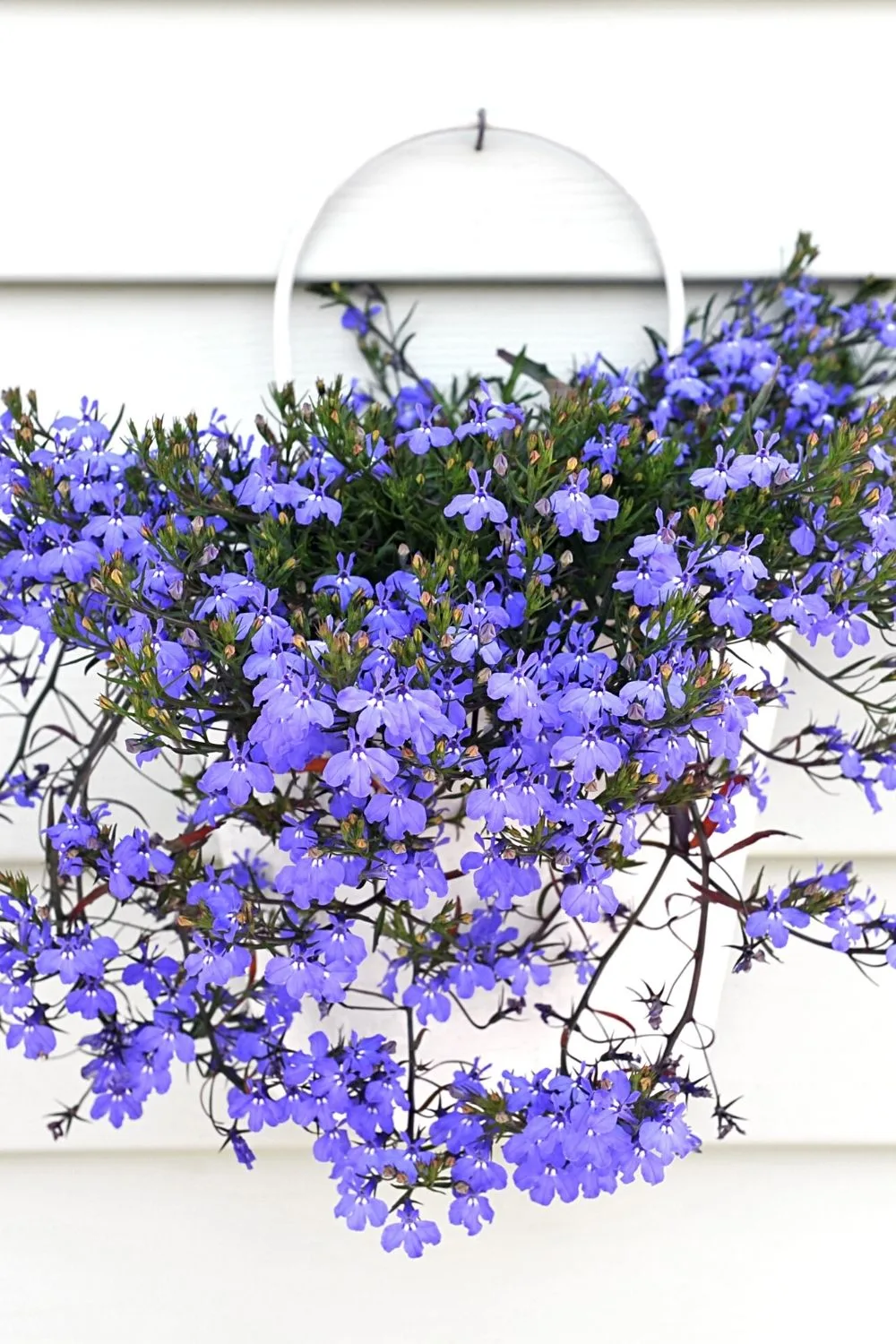
Lobelias are stunning annual plants that you can grow on an east-facing balcony
Lobelia is an annual herb that comes in many varieties. This plant is easy to grow and is known for its stunning bluish-purple flowers that are extremely vibrant.
Lobelias are summertime bloomers and will continue to bloom till early winter. Its basic plant care requirements include:
- Scientific name: Lobelia
- Family: Campanulaceae
- Temperature: 18-24 degrees Celsius (65-75 degrees Fahrenheit)
- Fertilizer: Needs liquid fertilizer once a month or every four to six weeks
- pH: 5.5 to 6.5
- Soil: well-draining and moist
- Lighting: full-sun and can tolerate partial shade
- Growth rate: moderate growth rate
- Humidity: 50% or lower
10. Tomato
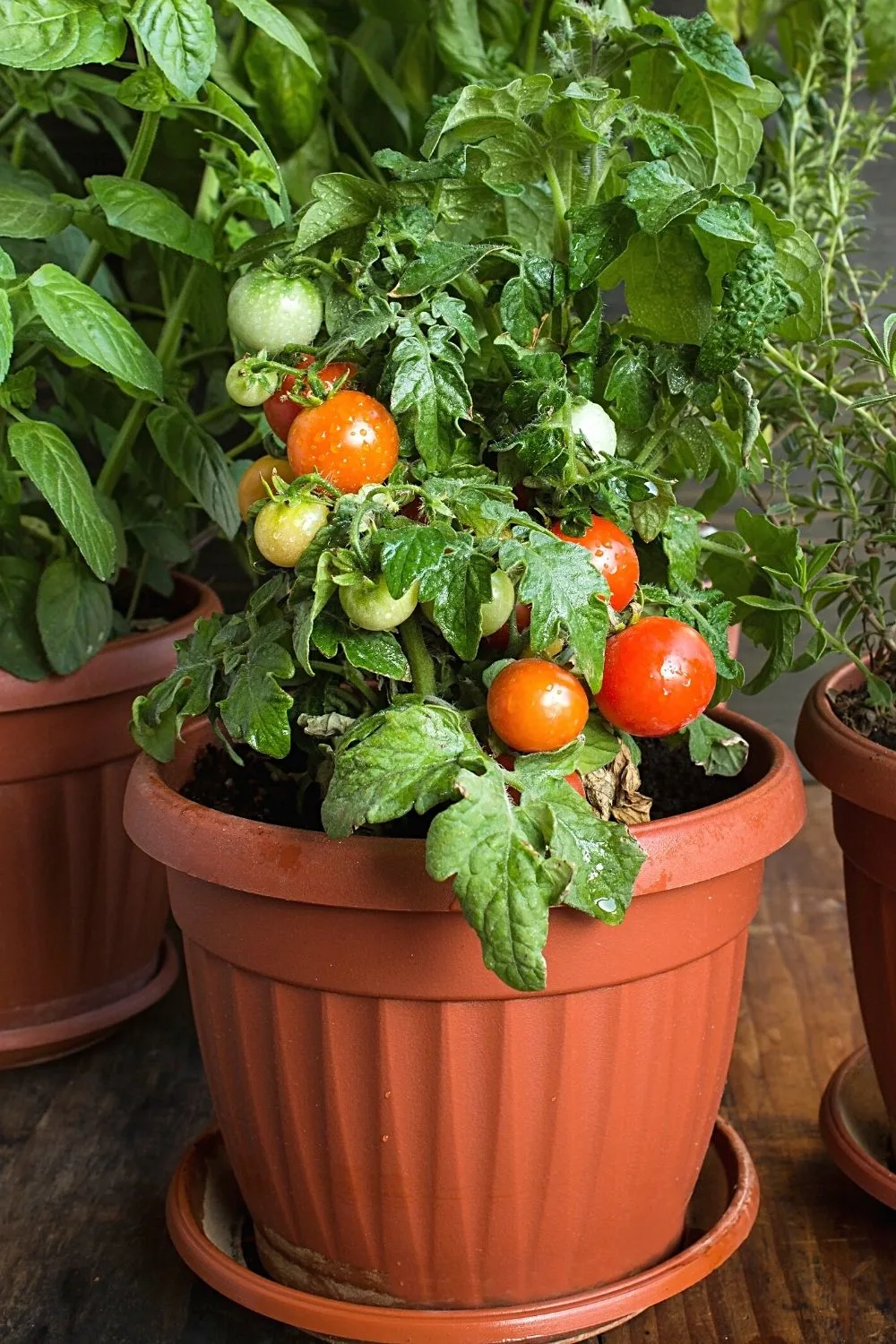
Tomato, a fruit and not a vegetable, is a plant you can easily grow in a pot on your east-facing balcony
Tomato is a very common fruit that many people often refer to as a vegetable. This plant is mostly grown in vegetable gardens but can also be grown on balconies within pots.
Its basic plant care requirements include:
- Scientific name: Solanum Lycopersicum
- Family: Solanaceae
- Temperature: around 55-84 degrees Fahrenheit (13-28 degrees Celsius)
- Fertilizer: Needs fertilizer soon after planting and just before fruiting
- pH: 6.2 to 6.8
- Soil: well-draining
- Lighting: full-sun
- Growth rate: moderate to slow growth rate
- Humidity: 75% to 90%
11. Sweet Pea Vine
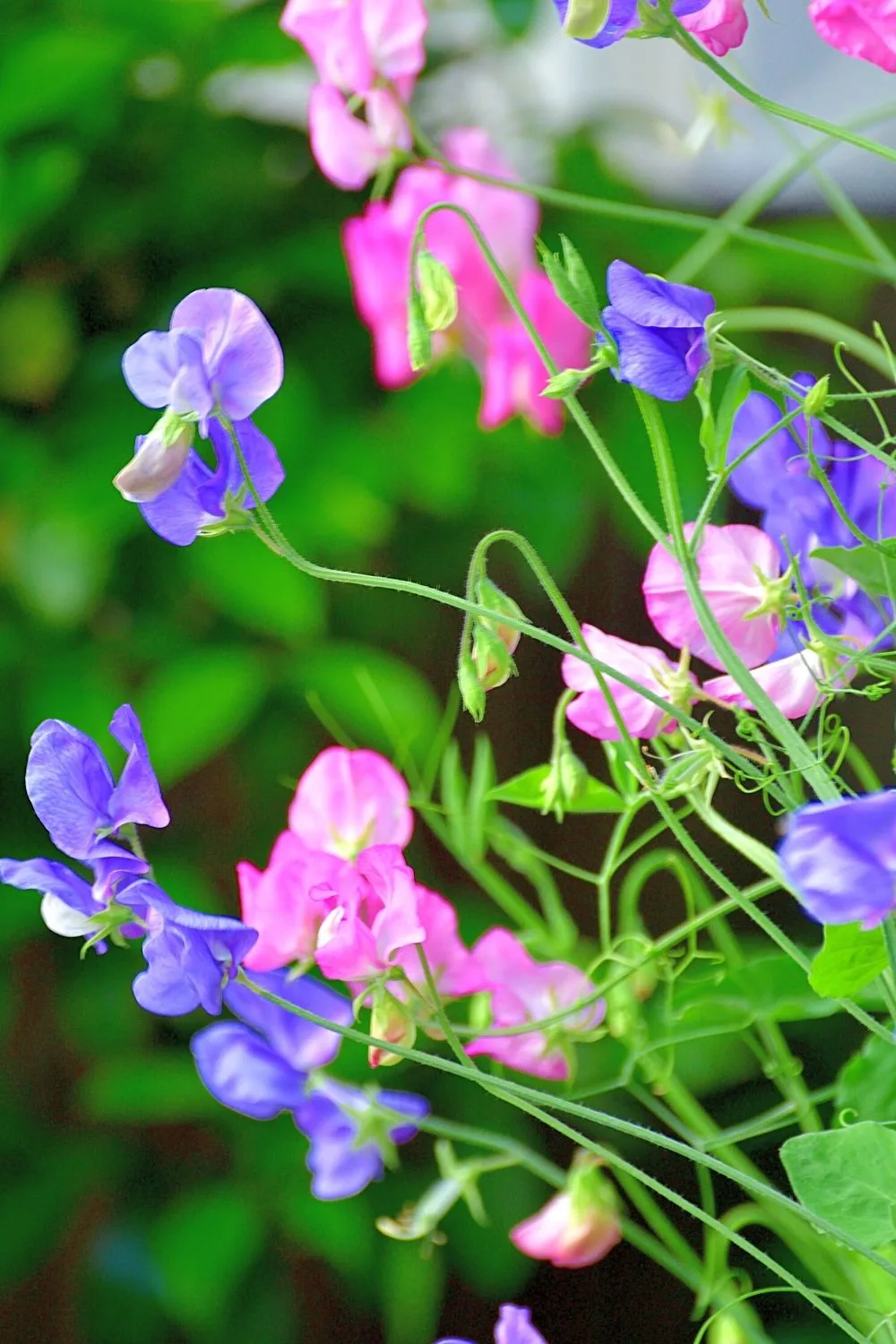
Sweet Pea Vine is best grown in hanging baskets on an east-facing balcony
Sweet Pea Vine is a must-have in everyone’s balconies since it can be grown in hanging baskets.
You can even keep this stunning plant close to the railings so that it can hang down from your balcony.
Sweet Pea Vine is a flowering plant that comes in different shades of colors, such as:
- Lavender
- Blue
- Pink
- Red
- White
Its basic plant care requirements include:
- Scientific name: Lathyrus Odoratus
- Family: Fabaceae
- Temperature: around 55-84 degrees Fahrenheit (13-28 degrees Celsius)
- Fertilizer: Needs high potassium fertilizer monthly
- pH: 7.0 to 7.5
- Soil: rich and well-draining
- Lighting: partial shade to full-sun
- Growth rate: moderate to slow growth rate
- Humidity: 50% to 75%
12. Spinach

Spinach is another edible plant you can grow in pots on an east-facing balcony
Spinach is another great vegetable plant that is easy to grow at home, within pots.
This leafy green vegetable originated from Persia and has now become a part of everyone’s diet.
Spinach is known to be an extremely healthy food since it contains several nutrients and antioxidants. Other than being beneficial for your health, this plant is also easy to grow and maintain.
Its basic plant care requirements include:
- Scientific name: Spinacia Oleracea
- Family: Amaranthaceae
- Temperature: 10-16 degrees Celsius (50-60 degrees Fahrenheit)
- Fertilizer: fertilize every two to three weeks during the growing season
- pH: 6.5 to 8
- Soil: organic-rich soil that is well-draining
- Lighting: full-sun
- Growth rate: fast to moderate growth rate
- Humidity: 90% to 95%
13. Garlic
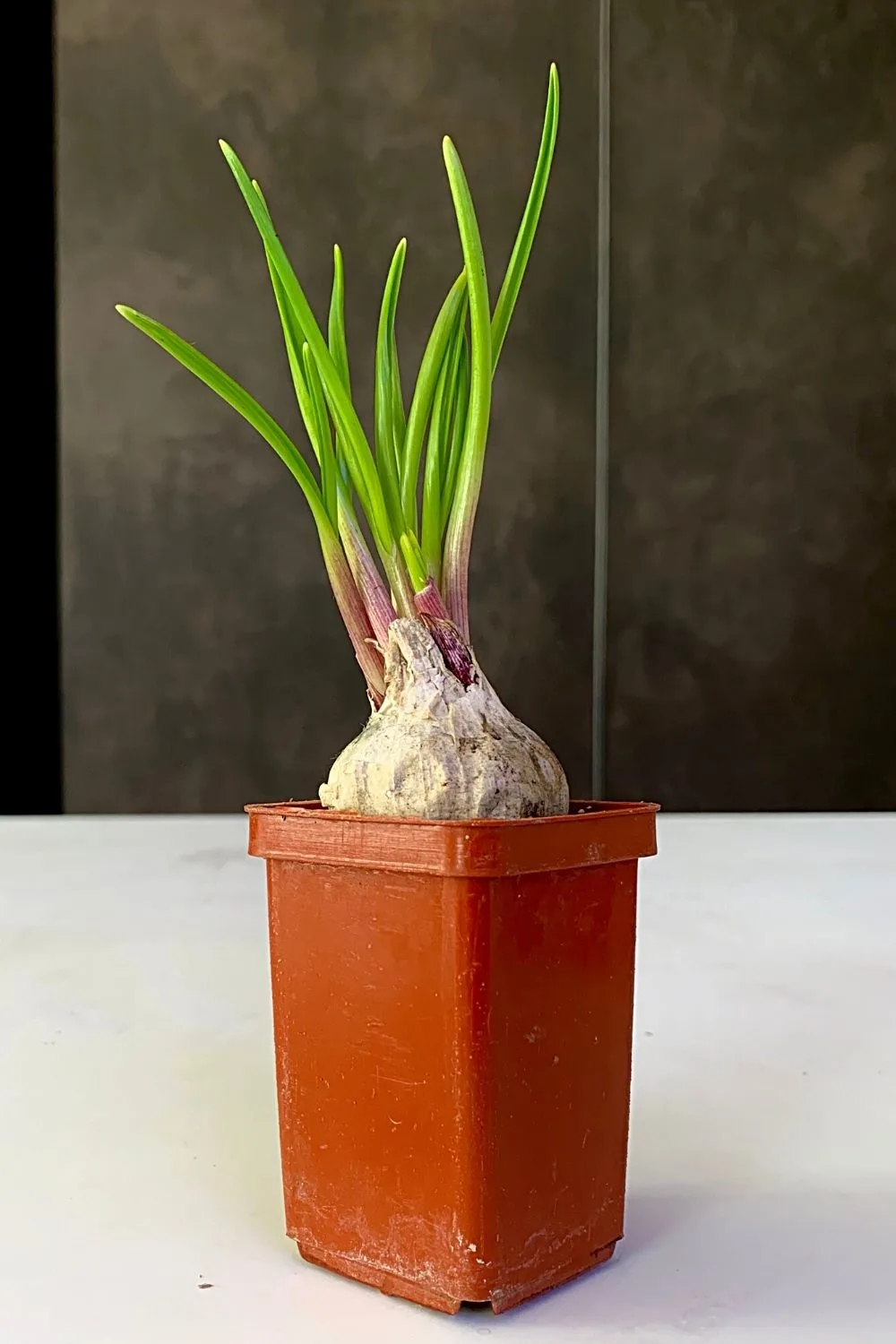
Garlic is a tasty herb you can easily grow in a pot on an east-facing balcony
Garlic is another famous herb that is related to onions, chives, and leeks.
Many cuisines around the world rely on this tasty herb to flavor their foods and even use it for medical reasons.
Garlic is known to be beneficial for the heart and for people with high blood pressure. Its basic plant care requirements include:
- Scientific name: Allium sativum
- Family: Amaryllidaceae
- Temperature: around 10-27 degrees Celsius (50-80 degrees Fahrenheit)
- Fertilizer: require heavy fertilization
- pH: 6.0 to 7.0
- Soil: well-drained and moisture-retentive soil
- Lighting: full-sun
- Growth rate: fast to moderate growth rate
- Humidity: 45 to 50%
14. Morning Glory
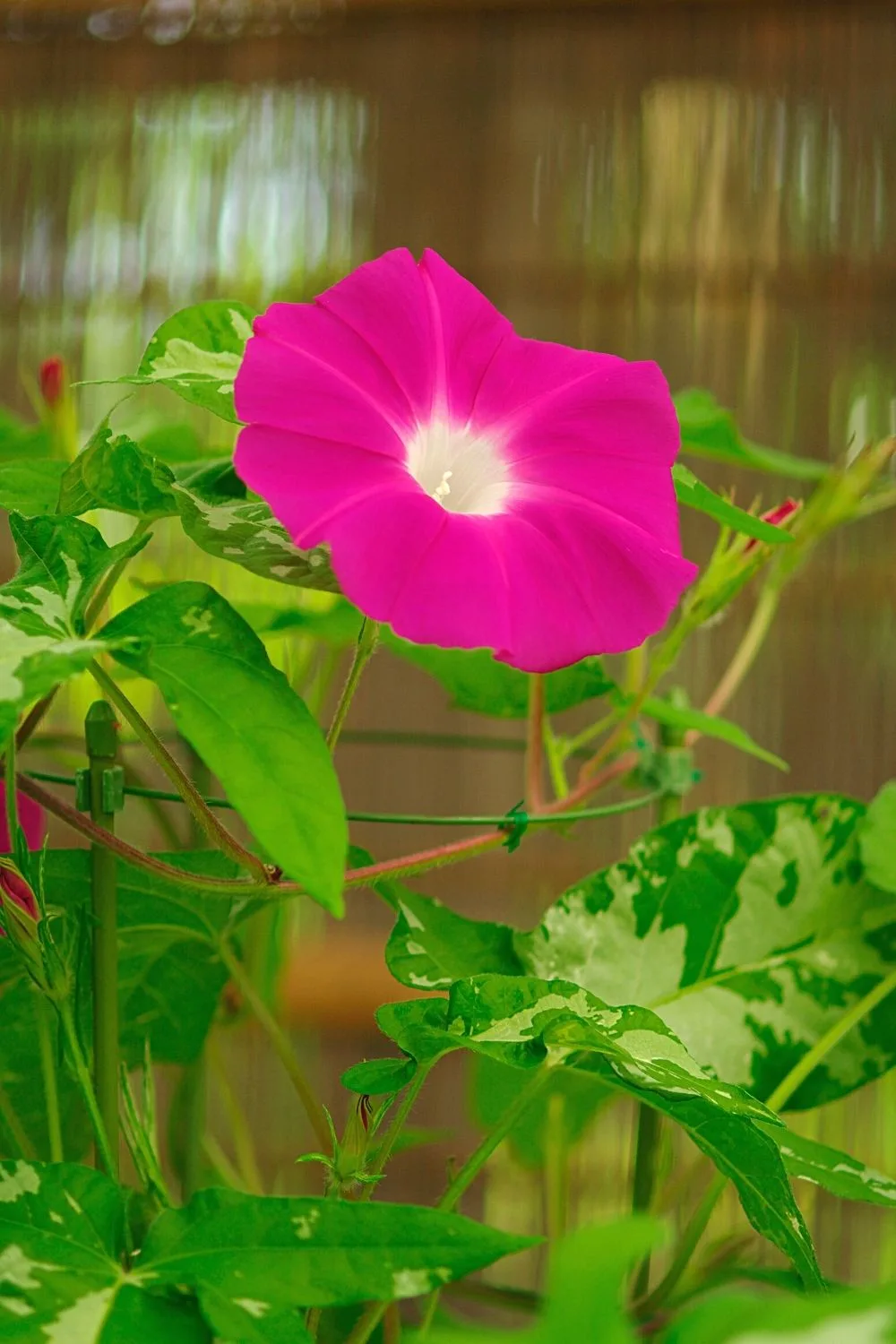
Morning Glory is a gorgeous flower you can grow in a pot from early summer to early winter on an east-facing balcony
Morning Glory is a gorgeous flowering plant that blooms from early summer till early winter.
This beautiful plant can grow a flower in plenty of colors, such as:
- Blue
- Dark and light purple
- Pink
- White
Hence, better investigate if you find your Morning Glory not blooming. Its basic plant care requirements include:
- Scientific name: Ipomoea
- Family: Convolvulaceae
- Temperature: 7-18 degrees Celsius (45-65 degrees Fahrenheit)
- Fertilizer: can grow without fertilization
- pH: 6.0 to 6.8
- Soil: well-drained and moisture-retentive soil
- Lighting: full-sun and can tolerate light shade
- Growth rate: fast growth rate
15. Black-eyed Susan
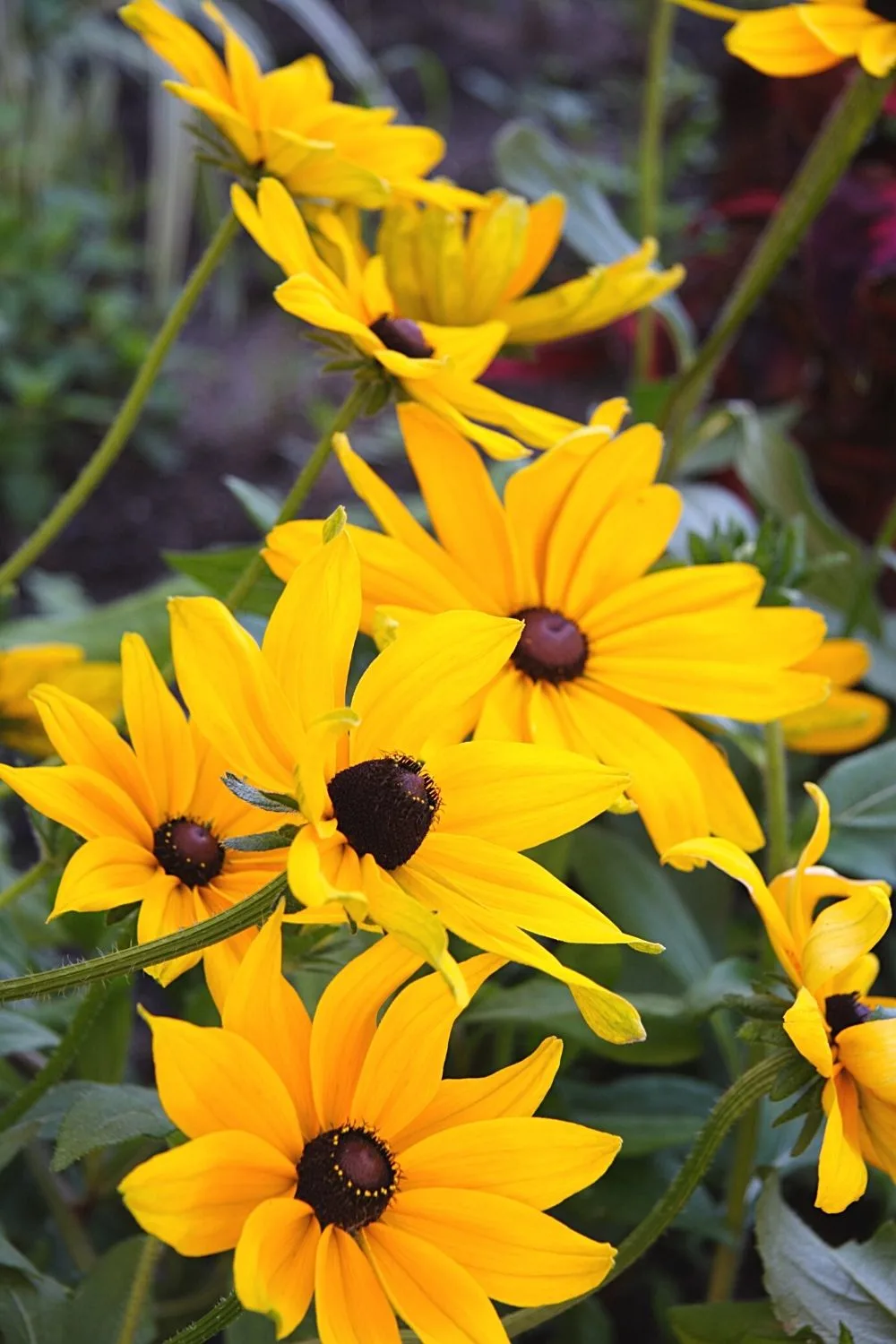
Black-eyed Susan, known for its stunning yellow flowers, can be grown in pots on an east-facing balcony
Black-eyed Susans, also known as Gloriosa Daisy, are among the most popular wildflowers grown within outdoor and indoor gardens.
This beautiful plant is known to attract a lot of bees to it, which helps the surrounding plants pollinate and reproduce more easily.
Native to North America, Black-eyed Susans bloom from June to September.
They are known for their stunning yellow flowers that instantly catch the eye of anyone passing by them.
Its basic plant care requirements include:
- Scientific name: Rudbeckia Hirta
- Family: Asteraceae
- Temperature: 21-24 degrees Celsius (70-75 degrees Fahrenheit)
- Fertilizer: likes fertile soil but can survive without it as well
- pH: 6.8 to 7.7
- Soil: likes a wide range of soil, from clay to loamy
- Lighting: full-sun
- Growth rate: fast to moderate growth rate
- Humidity: can survive in low humidity levels
16. Bleeding Heart
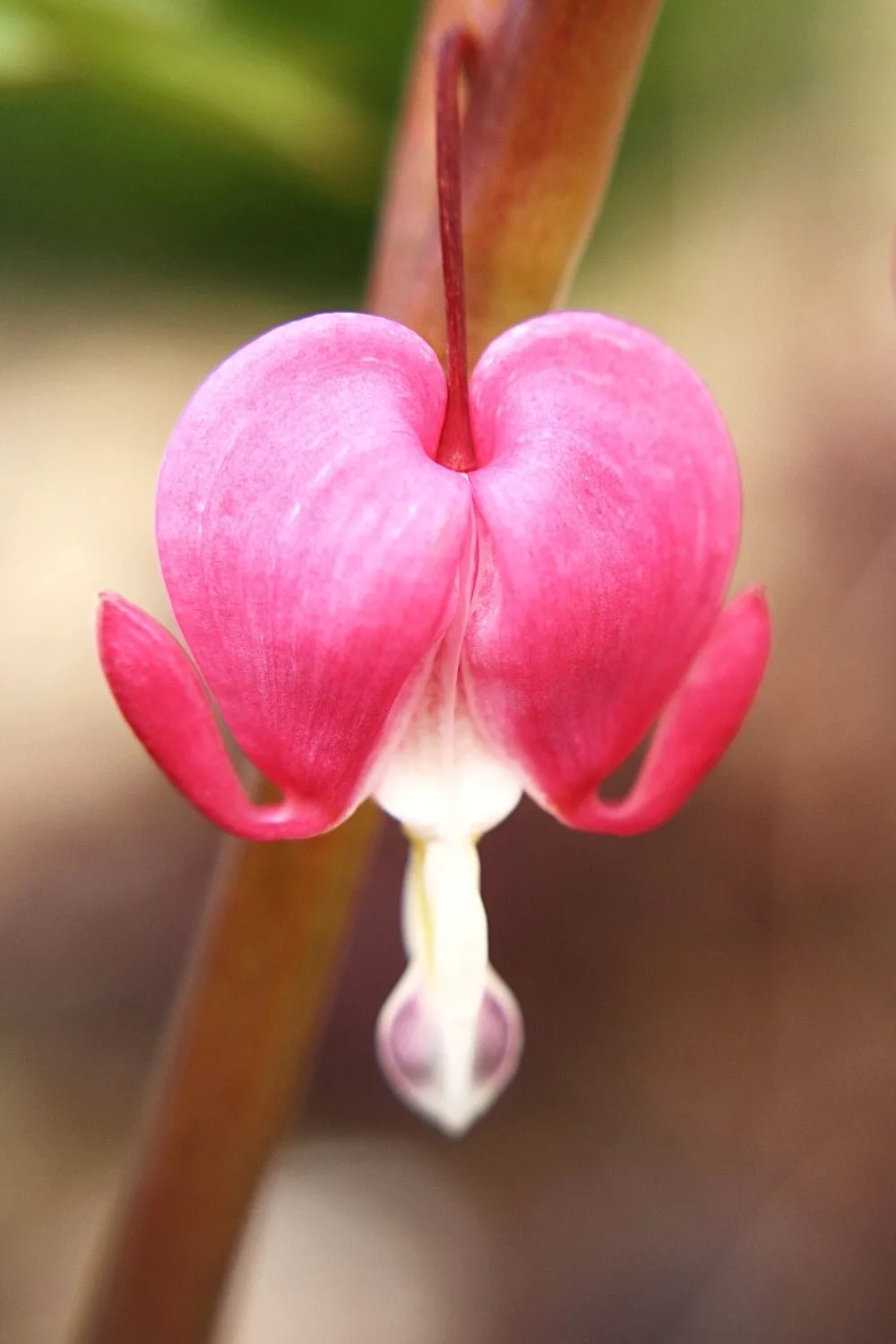
Bleeding Heart, known for its heart-shaped and pillow-like flowers, can be grown on your east-facing balcony
The Bleeding-heart plant got its unique name from its heart-shaped and pillow-like flowers that dangle from the stems.
This is a gorgeous plant that is mostly seen growing in woodland areas.
Over the course of the years, the Bleeding Heart has become a common garden and indoor plant. Bleeding-heart blooms red, pink, and white flowers from early spring to late summer.
They are known to be toxic if ingested by both pets and humans. Its basic plant care requirements include:
- Scientific name: Dicentra
- Family: Ranunculales
- Temperature: 13-24 degrees Celsius (55-75 degrees Fahrenheit)
- Fertilizer: require all-purpose, slow-release fertilizer during the spring season
- pH: 6.0 to 6.5
- Soil: Likes soil rich in organic material, moist, and well-draining
- Lighting: partial shade to full-sun
- Growth rate: medium growth rate
- Humidity: tolerates a wide range of humidity levels
17. Clematis
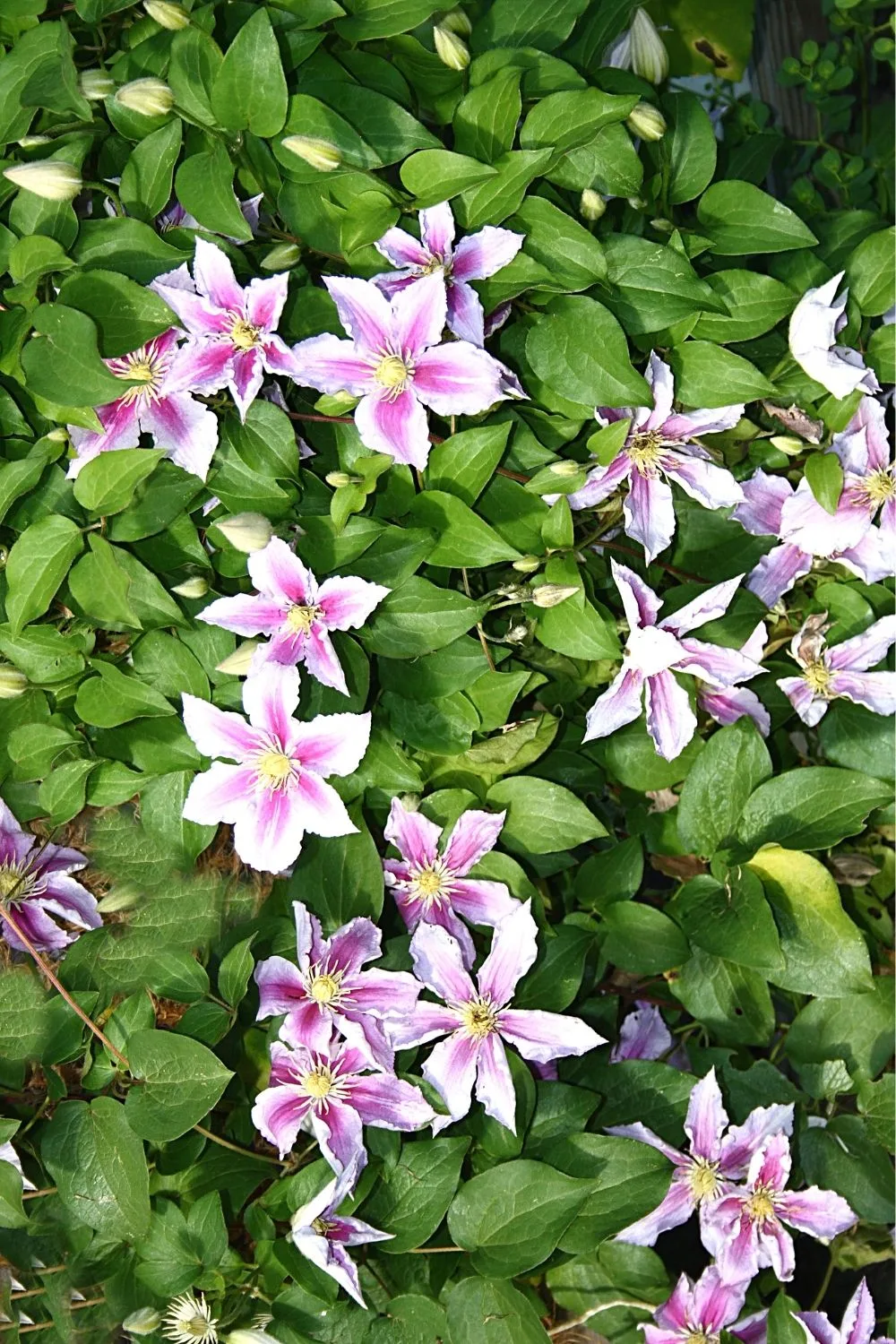
Clematis is a low-maintenance flower that you can grow on an east-facing balcony
Clematis, more commonly known as leather flowers, are simple yet elegant flowering plants that require very low maintenance and are easy to grow.
This beautiful plant is a climber, which means if kept next to your balcony reeling, it will start to wrap itself around it.
It can take a few years for Clematis to grow vines and bloom vigorously. But the growing process is just as beautiful as the final result.
But, if you find your Clematis not blooming, better take a better look at it to find the culprit.
Its basic plant care requirements include:
- Scientific name: Clematis
- Family: Ranunculaceae
- Temperature: 7.5-24 degrees Celsius (45-75 degrees Fahrenheit)
- Fertilizer: requires heavy feeding every 4-6 weeks until the growing season ends
- pH: 5 to 7.0
- Soil: well-draining
- Lighting: full-sun to partial shade
- Growth rate: moderate to slow growth rate
- Humidity: tolerates a wide range of humidity levels
18. Rosemary
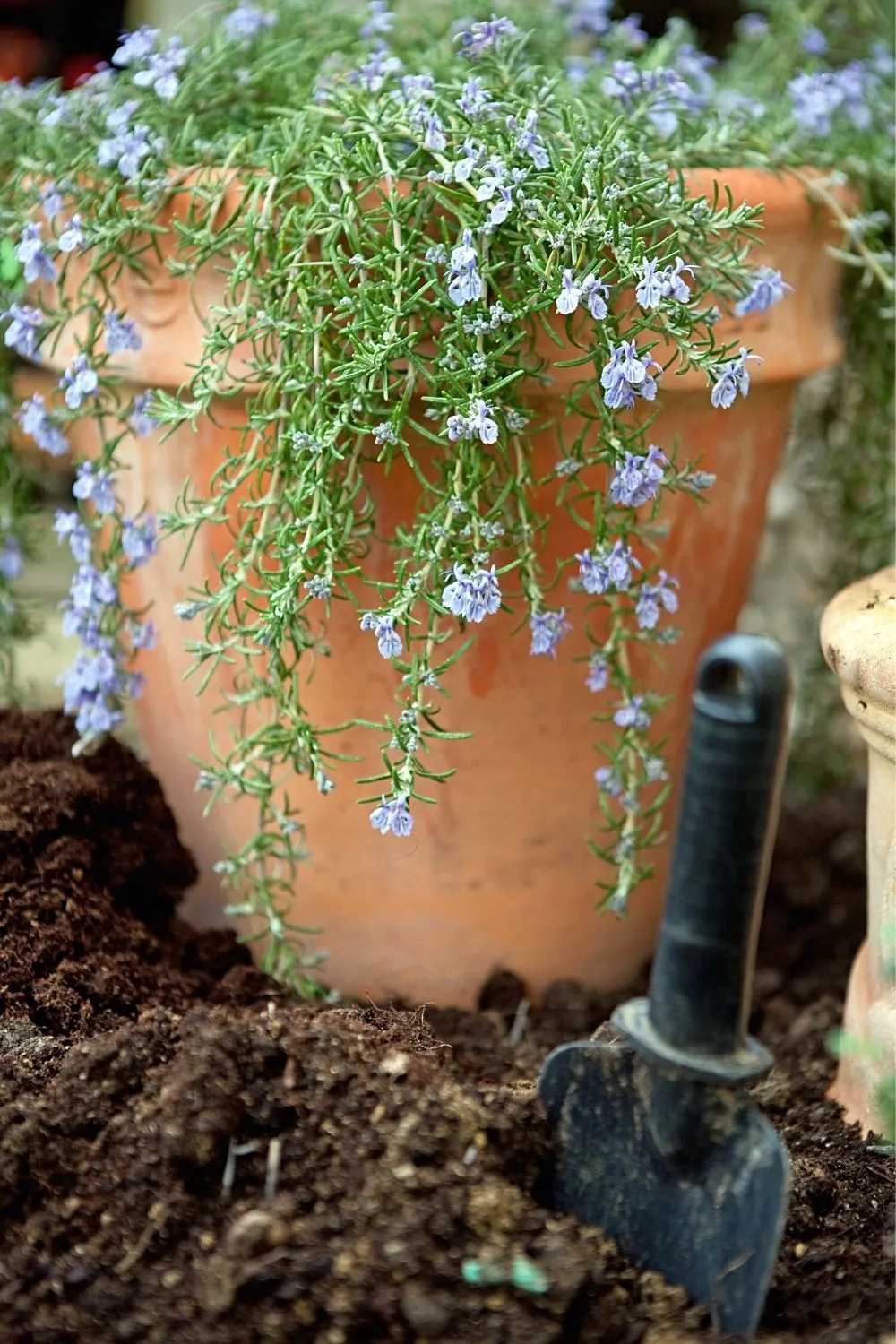
Rosemary is another widely used herb that you can grow easily in pots on east-facing balconies
Rosemary is one of the most widely used herbs around the world. It is known to have several medical benefits to it since it has antifungal, antibacterial, and antiviral properties to it.
This delicious herb is native to the Mediterranean and is known for its evergreen leaves.
Rosemary has tiny purple flowers that bloom yearly to complete its reproductive cycle.
Its basic plant care requirements include:
- Scientific name: Salvia Rosmarinus
- Family: Lamiaceae
- Temperature: around 13-27 degrees Celsius (55 -80 degrees Fahrenheit)
- Fertilizer: Does not require fertilizer. In case of slow growth, fertilize once in early spring
- pH: 0 to 7.0
- Soil: well-draining and loamy soil
- Lighting: full-sun
- Growth rate: Slow to moderate growth rate
- Humidity: 45% to 55%
19. Dwarf Conifers
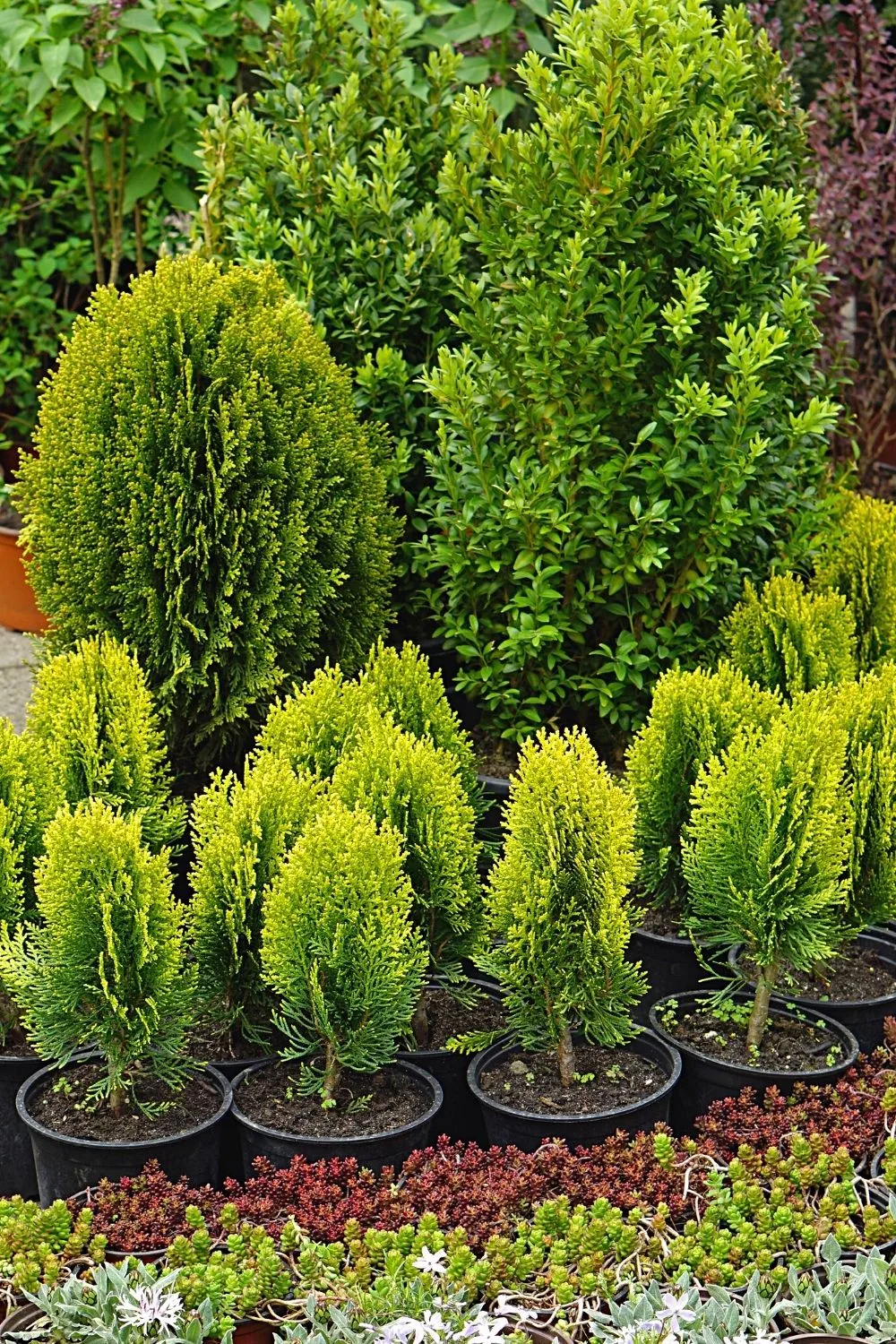
Though you can grow Dwarf Conifers in pots on your east-facing balcony, they can grow large after 20 to 30 years
Dwarf Conifers come in many varieties and sizes. While Dwarf Conifers is referred to as a “dwarf” plan, it will eventually grow larger over the next 20 to 30 years.
However, until several years pass, it remains compact and small. Its basic plant care requirements include:
- Temperature: lives in cold temperatures
- Fertilizer: Does not require fertilizers often.
- pH: 5 to 6.5
- Soil: well-draining and loamy soil
- Lighting: full-sun
- Growth rate: slow growth rate
- Humidity: 50% to 80%
20. Mint
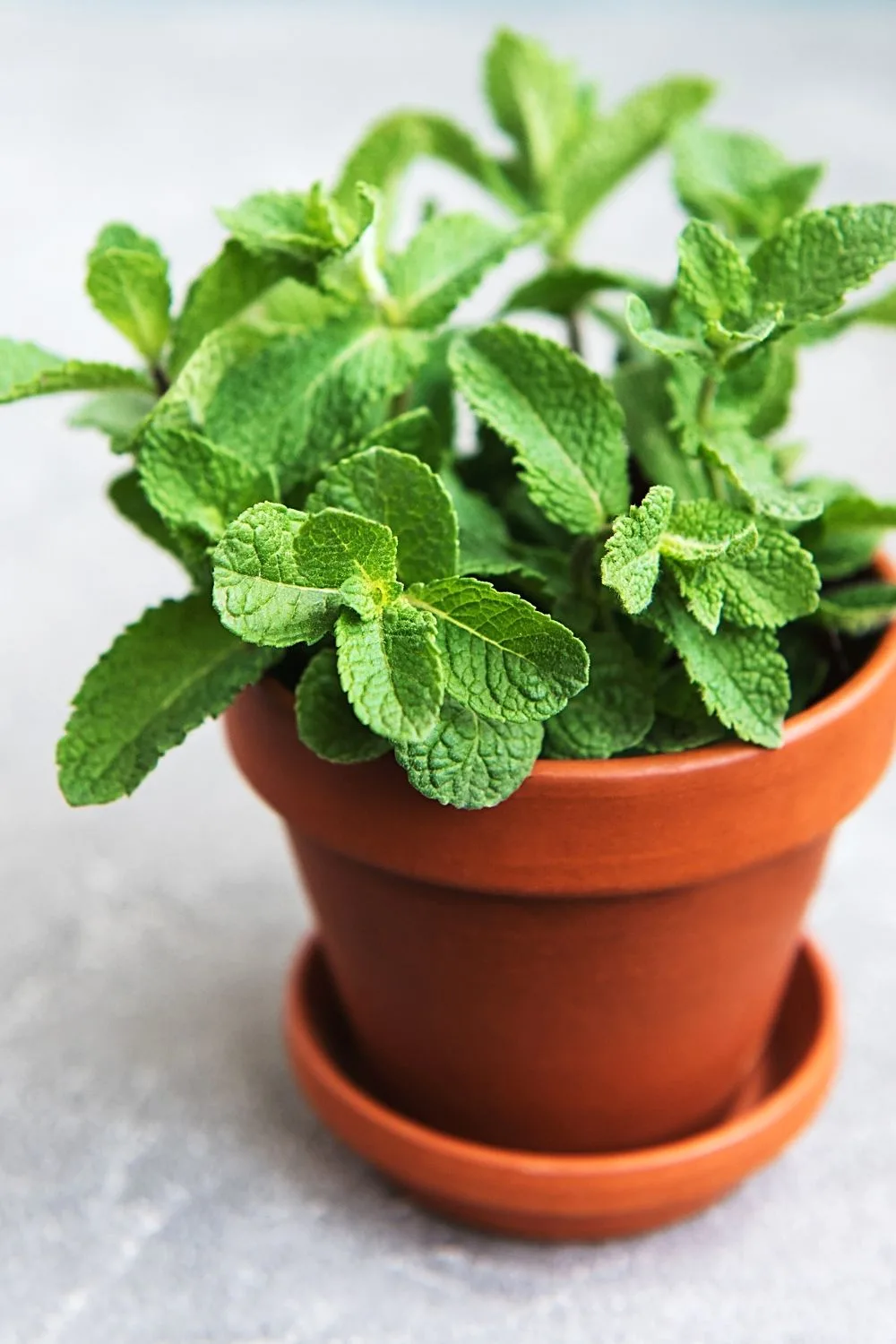
Mint is another perennial herb you can add to your east-facing balcony collection
Mint is a common perennial herb that is often used in many cuisines.
It has toothed leaves and grows flowers of many colors, such as:
- Pink
- Purple
- White
Its basic plant care requirements, which include the mint’s watering requirements, include:
- Scientific name: Mentha
- Family: Lamiaceae
- Temperature: 13-21 degrees Celsius (55-70 degrees Fahrenheit)
- Fertilizer: fertilize every four to six weeks in early spring
- pH: 0 to 7.0
- Soil: well-draining and moist soil
- Lighting: full-sun
- Growth rate: moderate to fast growth rate
- Humidity: 45% to 55%
21. Spring Onions
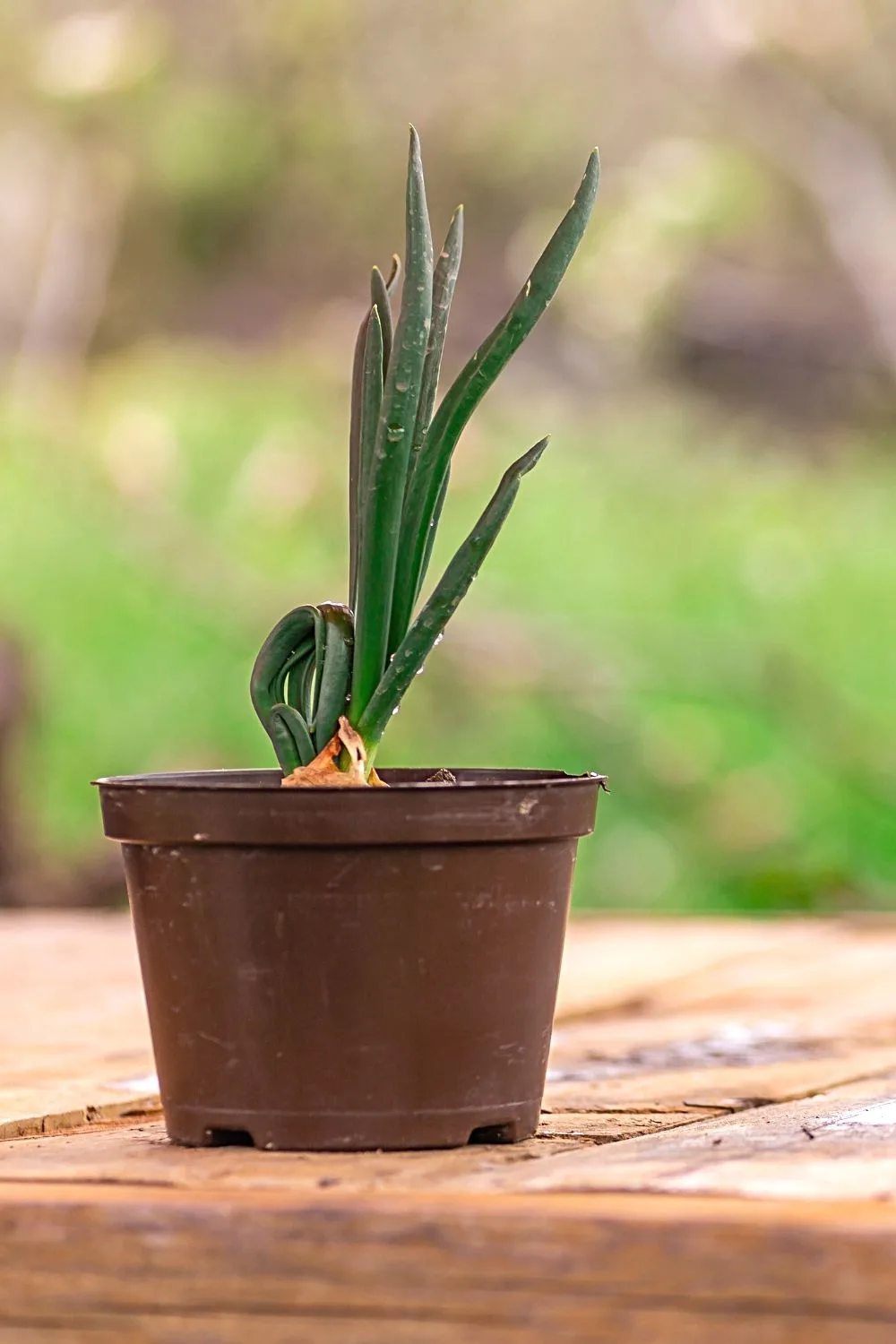
Spring Onions is another edible plant you can grow in pots on your east-facing balcony
Spring Onions don’t seem like a likely choice for planting indoors or on your balconies, but growing vegetables at home have now become a huge trend.
Its basic plant care requirements include:
- Scientific name: Allium fistulosum
- Family: Amaryllidaceae
- Temperature: 13-24 degrees Celsius (55-75 degrees Fahrenheit)
- Fertilizer: requires a high nitrogen-based fertilizer
- pH: 3 to 5.8
- Soil: well-draining and moist soil
- Lighting: full-sun or partial shade
- Growth rate: moderate to slow growth rate
- Humidity: 45% to 55%
22. Green Peas
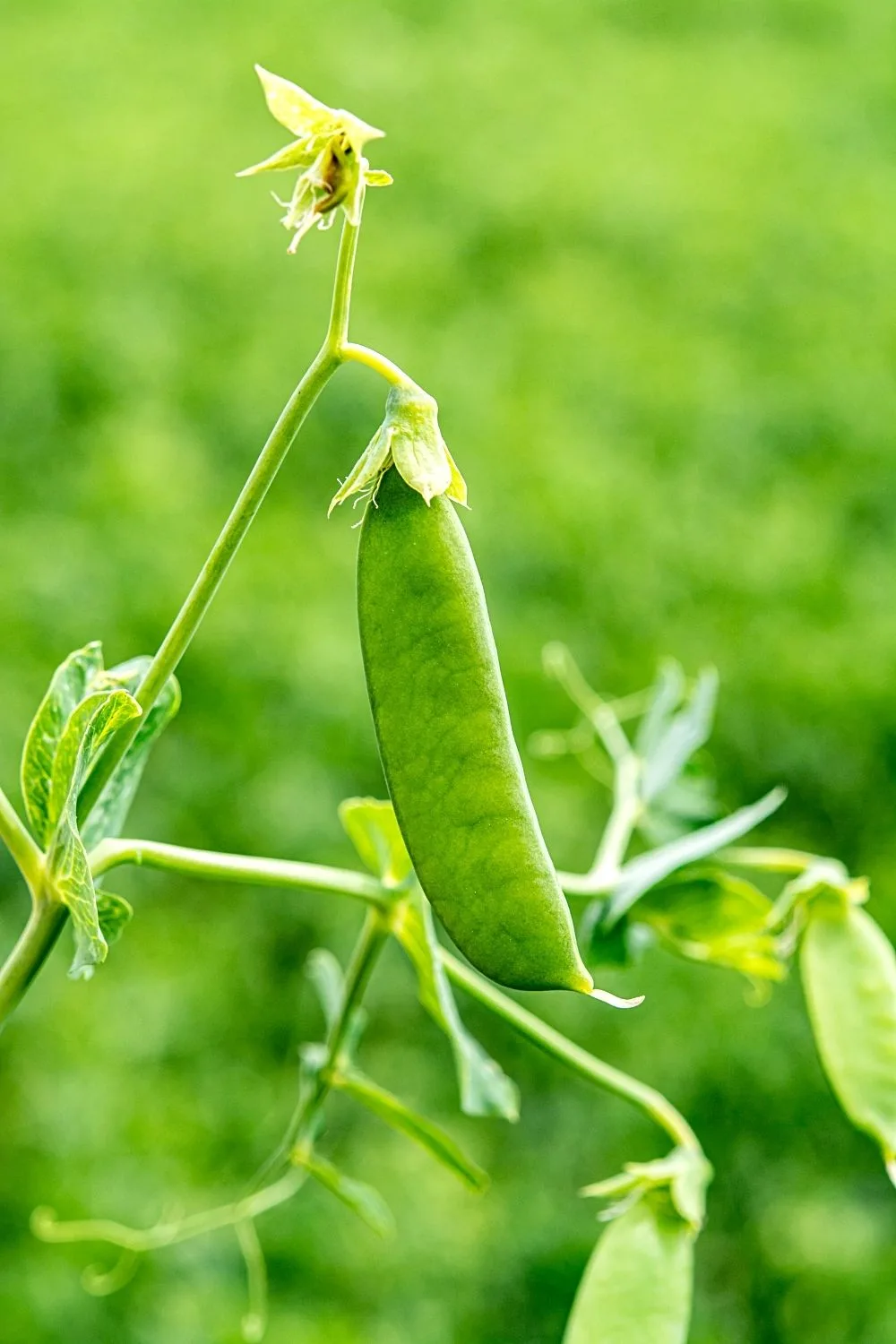
Another vegetable you can grow in a pot in an east-facing garden are Green Peas
Green Peas are another vegetable that you can grow on your balconies. This delicious food is known to have many minerals and vitamins.
Its basic plant care requirements include:
- Scientific name: Pisum Sativum
- Family: Legumes
- Temperature: 10-18 degrees Celsius (50-65 degrees Fahrenheit)
- Fertilizer: well-rotted manure or compost fertilizer
- pH: 0 to 7.5
- Soil: sandy, loamy, or clay soil
- Lighting: full-sun
- Growth rate: fast growth rate
- Humidity: 90% to 98%
23. Ferns
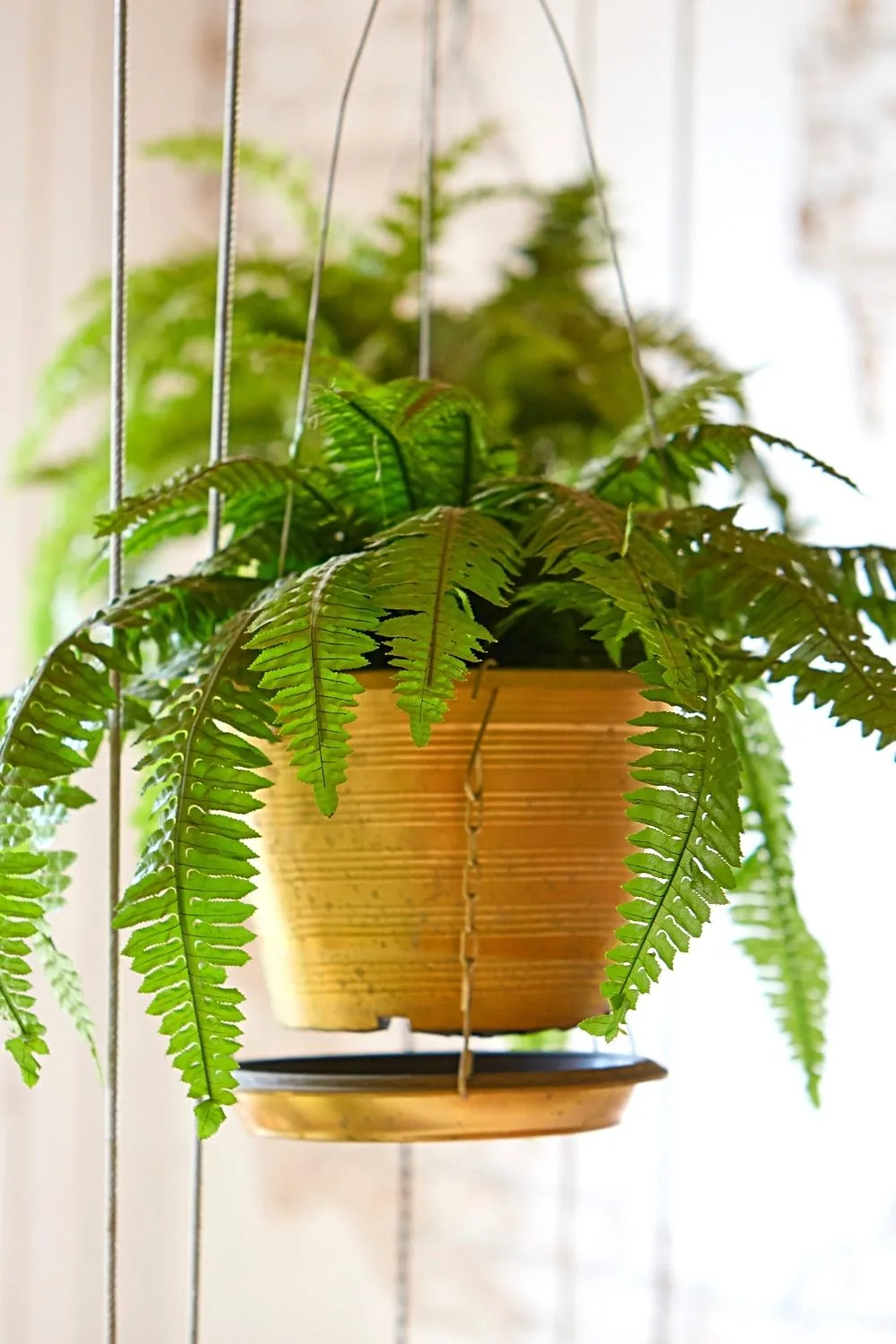
Ferns are stunning plants that you can grow on your east-facing balcony
Ferns are vibrant green plants that are grown for their stunning leaves, which grow in many different colors.
Its basic plant care requirements include:
- Scientific name: tracheophytes
- Family: Polypodiaceae
- Temperature: 18-24 degrees Celsius (65-75 degrees Fahrenheit)
- Fertilizer: they are light feeders and require a balanced fertilizer
- pH: 0 to 7.0
- Soil: good drainage and high organic content soil
- Lighting: Indirect sunlight
- Growth rate: moderate to slow growth rate
- Humidity: 5% to 10%
24. Basil
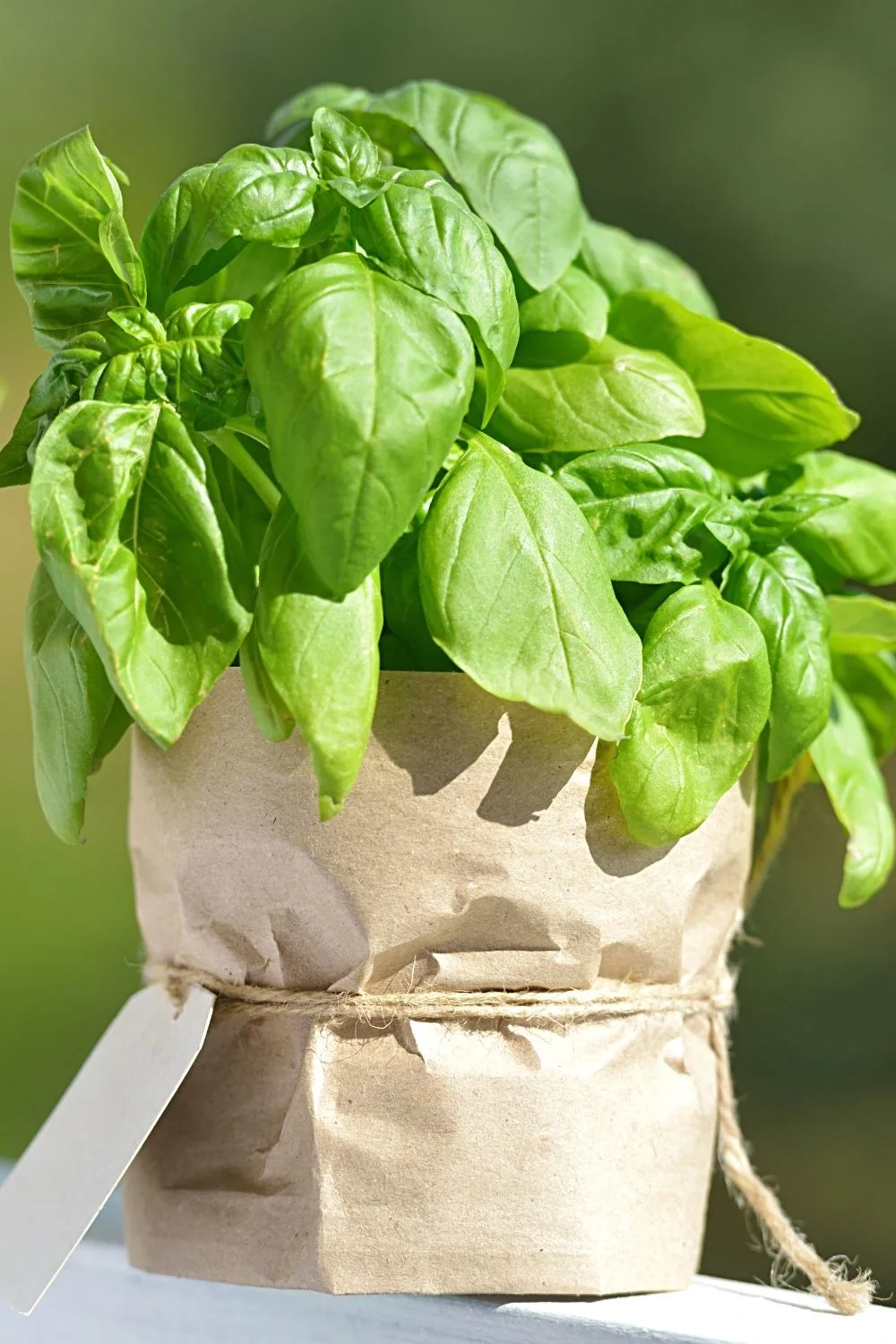
Basil is another tasty herb you can grow in pots on your east-facing balcony
Basil is another delicious herb used in different cuisines but can commonly be seen on pizzas and several Italian dishes.
Its basic plant care requirements include:
- Scientific name: Ocimum basilicum
- Family: mint or sage family or deadnettle
- Temperature: around 50 to 80 degrees Fahrenheit (10-to-27-degree Celsius)
- Fertilizer: fertilize every four to six weeks with organic fertilizer
- pH: 5.5 to 6.5
- Soil: compost-rich soil with other organic matter
- Lighting: six hours of sunlight near an East-facing window
- Growth rate: fast growth rate
- Humidity: 60% to 65%
25. Parsley
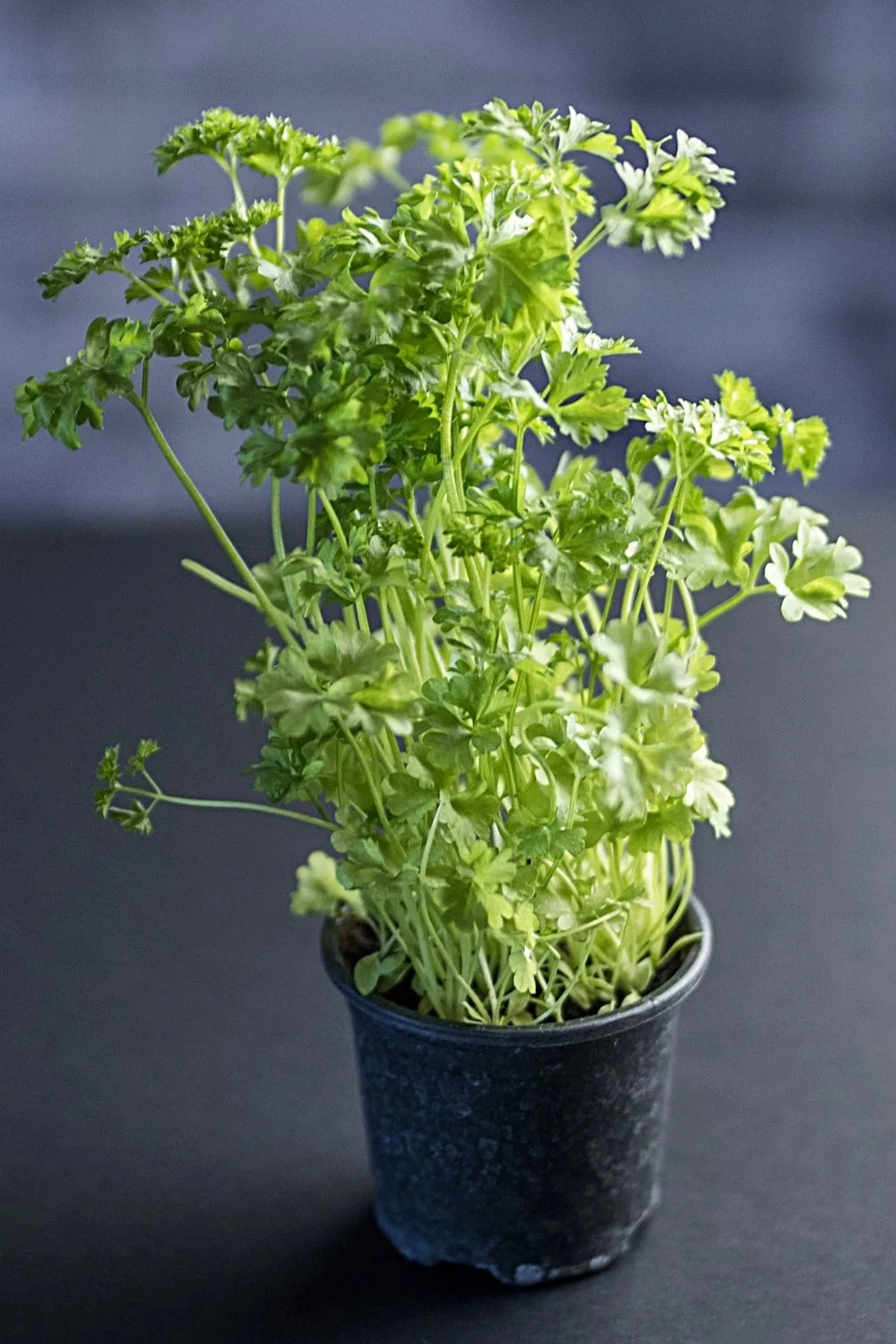
Parsley, another common herb added to food, can be grown in pots on an east-facing balcony
Parsley is a common herb used in foods and drinks. It is generally used to garnish foods but is also used in cosmetics, perfumes, and soaps.
Its basic plant care requirements include:
- Scientific name: Apiaceae
- Family: Umbellifers
- Temperature: 40 to 90 degrees Fahrenheit (4-to-32-degree Celsius)
- Fertilizer: fertilize once or twice while it’s the growing season
- pH: 6.0 to 7.0
- Soil: Soil that is both well-draining and organic
- Lighting: Full-sun
- Growth rate: slow growth rate
- Humidity: 95 to 100%
26. Berberis
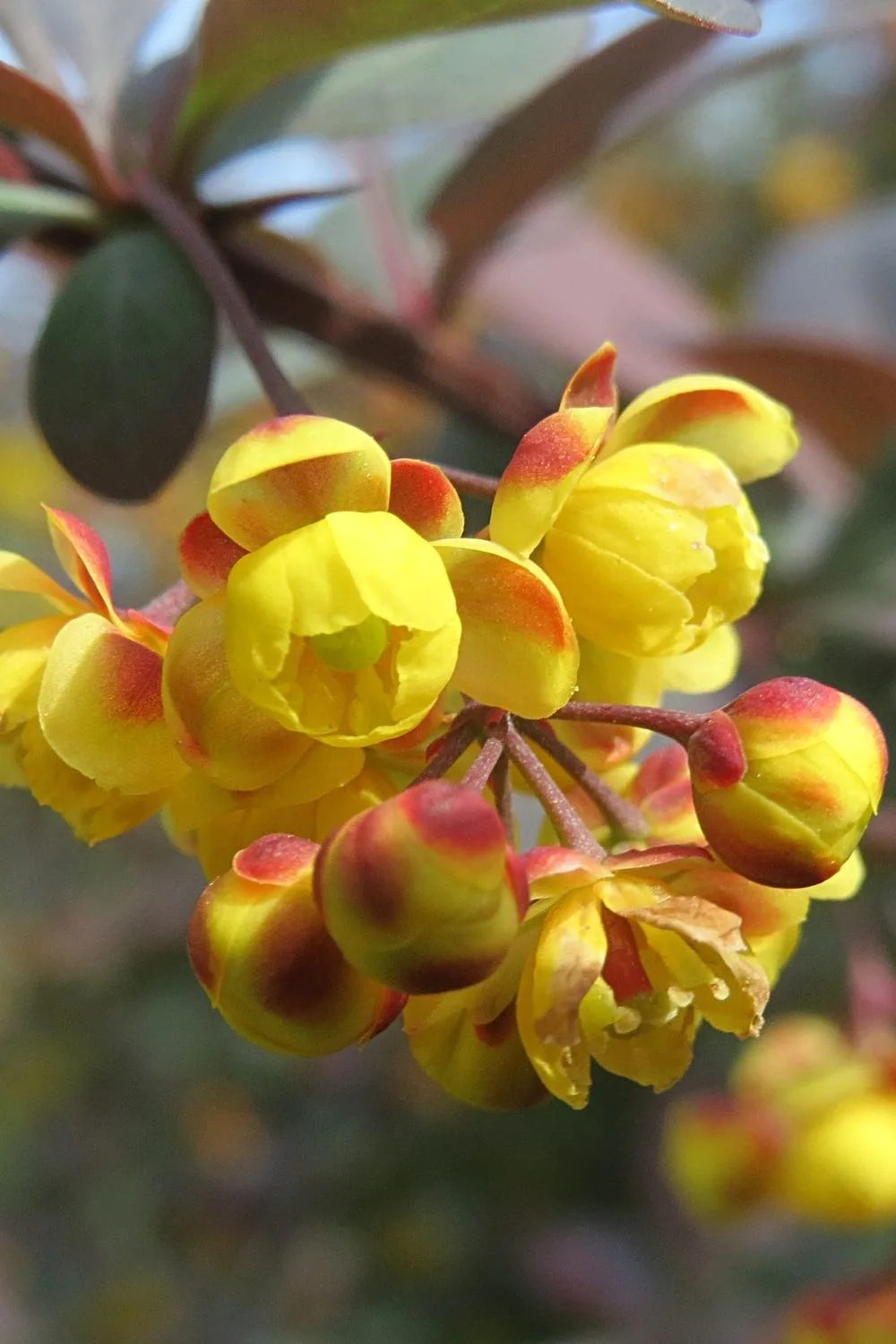
Berberis, aka Barberry, is another stunning plant you can grow on an east-facing balcony
Berberis, also known as barberry, is a beautiful plant that is often used to cure eye, mouth, and ear infections.
This plant grows as a shrub and often sprouts small yellow flowers.
Its basic plant care requirements include:
- Scientific name: Berberis
- Family: Berberidaceae
- Temperature: 40 to 90 degrees Fahrenheit (4-to-32-degree Celsius)
- Fertilizer: Use a diluted, well-balanced fertilizer
- pH: 6.0 to 7.0
- Soil: well-drained and moist soil
- Lighting: Full-sun or partial shade
- Growth rate: moderate to fast growth rate
- Humidity: 50 to 65%
27. Geraniums
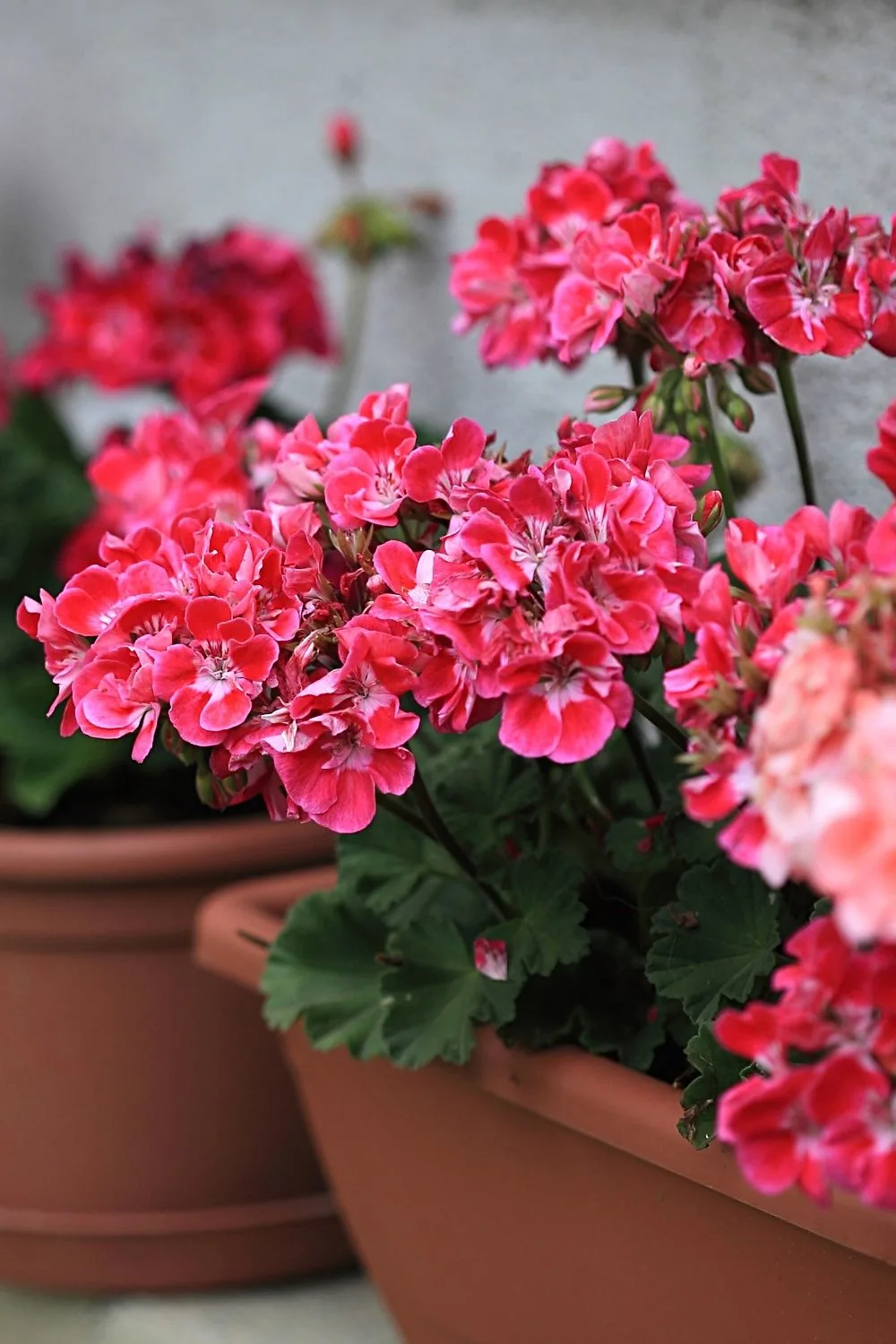
Geraniums are colorful flowers that you can grow on an east-facing balcony
Geraniums are flowering plants known for their stunning blooms that grow in several different colors ranging from pink to red.
Its basic plant care requirements include:
- Temperature: around 60 to 75 degrees Fahrenheit (16-to-24-degree Celsius)
- Fertilizer: Use organic fertilizer every 4-6 weeks in its active growing seasons
- pH: 6.0 to 6.5
- Soil: well-draining soil
- Lighting: Full-sun or partial shade
- Growth rate: fast growth rate
- Humidity: around 80%
- Scientific name: Pelargonium
- Family: Geraniaceae
28. Desert Rose
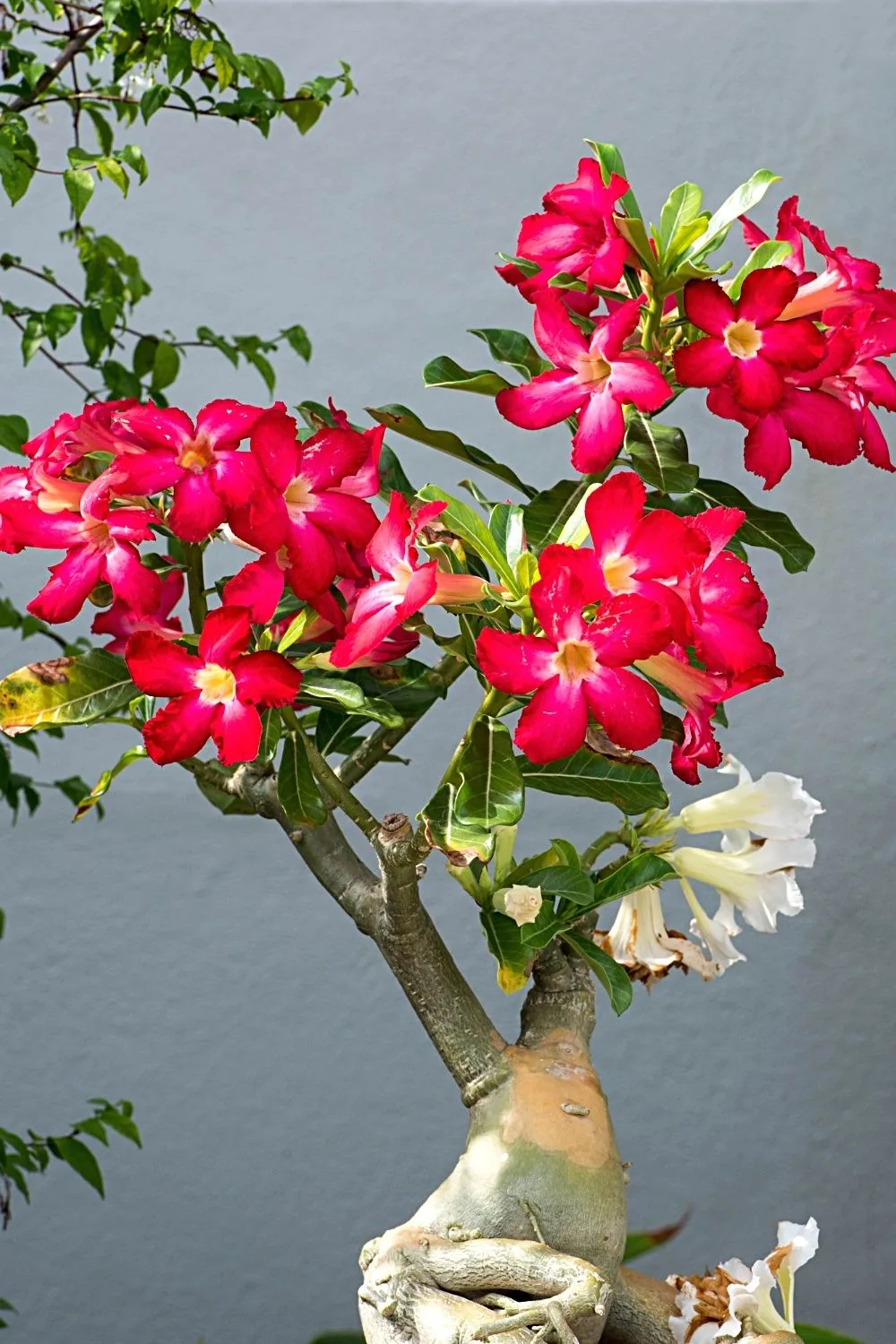
Desert Rose, despite its beauty, should be kept away from pets and children when grown on your east-facing balcony
Desert Rose is a stunning plant that can grow in several conditions. Its sap is known to be harmful to pets and children, so it should be kept away from them.
Its basic plant care requirements include:
- Scientific name: Adenium Obesum
- Family: Apocynaceae
- Temperature: 70 to 80 degrees Fahrenheit (21-to-27-degree Celsius)
- Fertilizer: does not require plenty of fertilizer
- pH: 6.0 to 7.0
- Soil: well-draining, sandy soil
- Lighting: Full-sun
- Growth rate: slow growth rate
- Humidity: 40% relative humidity
29. Carnation
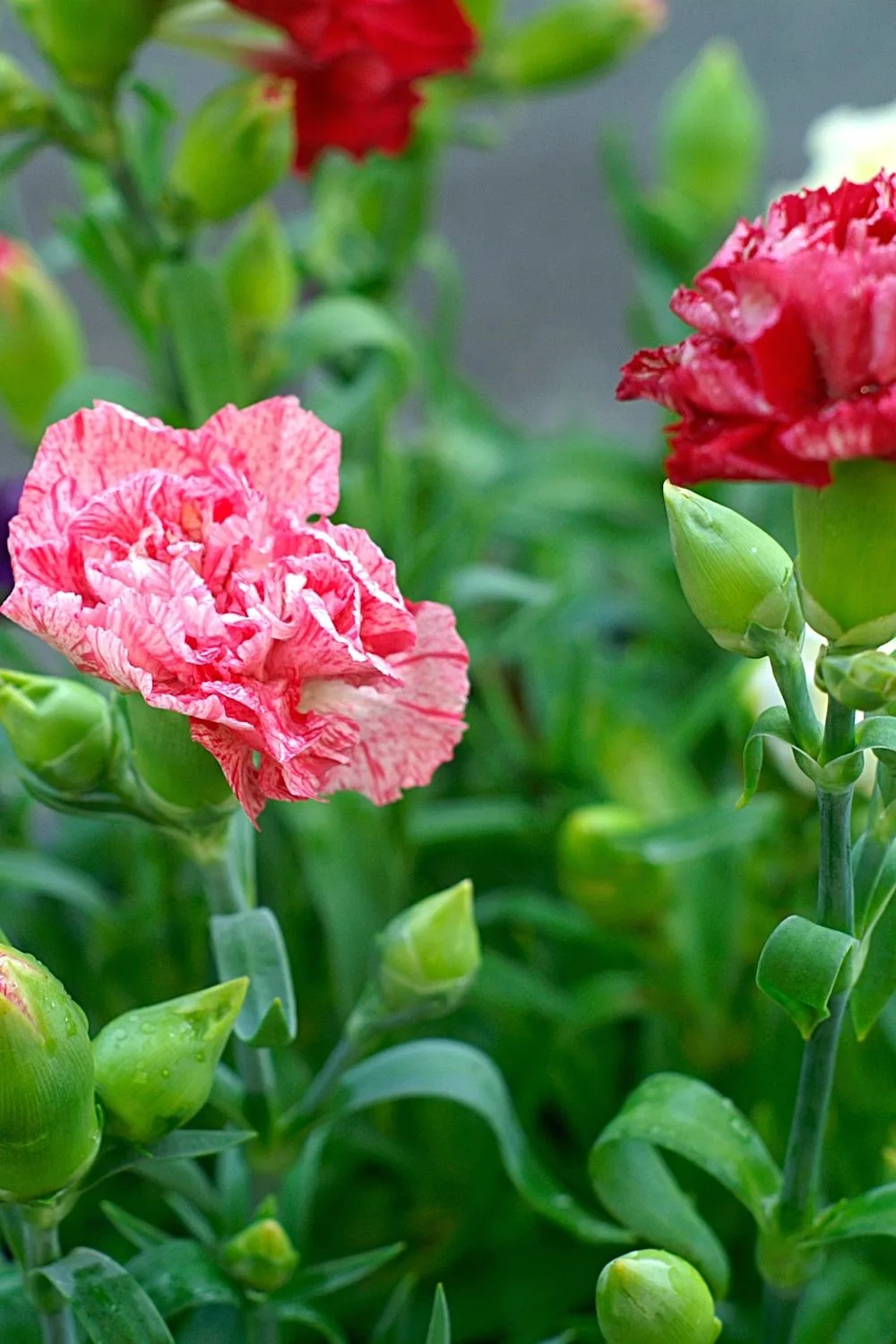
Carnation, aka Clove Pink, is another colorful plant you can add to your growing east-facing balcony collection
Carnation, also known as clove pink, is another gorgeous flowering plant that grows different shades of flowers ranging from purple to red.
Its basic plant care requirements include:
- Scientific name: Dianthus Caryophyllus
- Family: pinks
- Temperature: 50 to 65 degrees Fahrenheit (10-to-18-degree Celsius)
- Fertilizer: Use fertilizers made for flowering plants
- pH: 6.7
- Soil: well-draining, fertile soil
- Lighting: Full-sun
- Growth rate: fast growth rate
- Humidity: 80% to 85%
30. Bowl Lotus
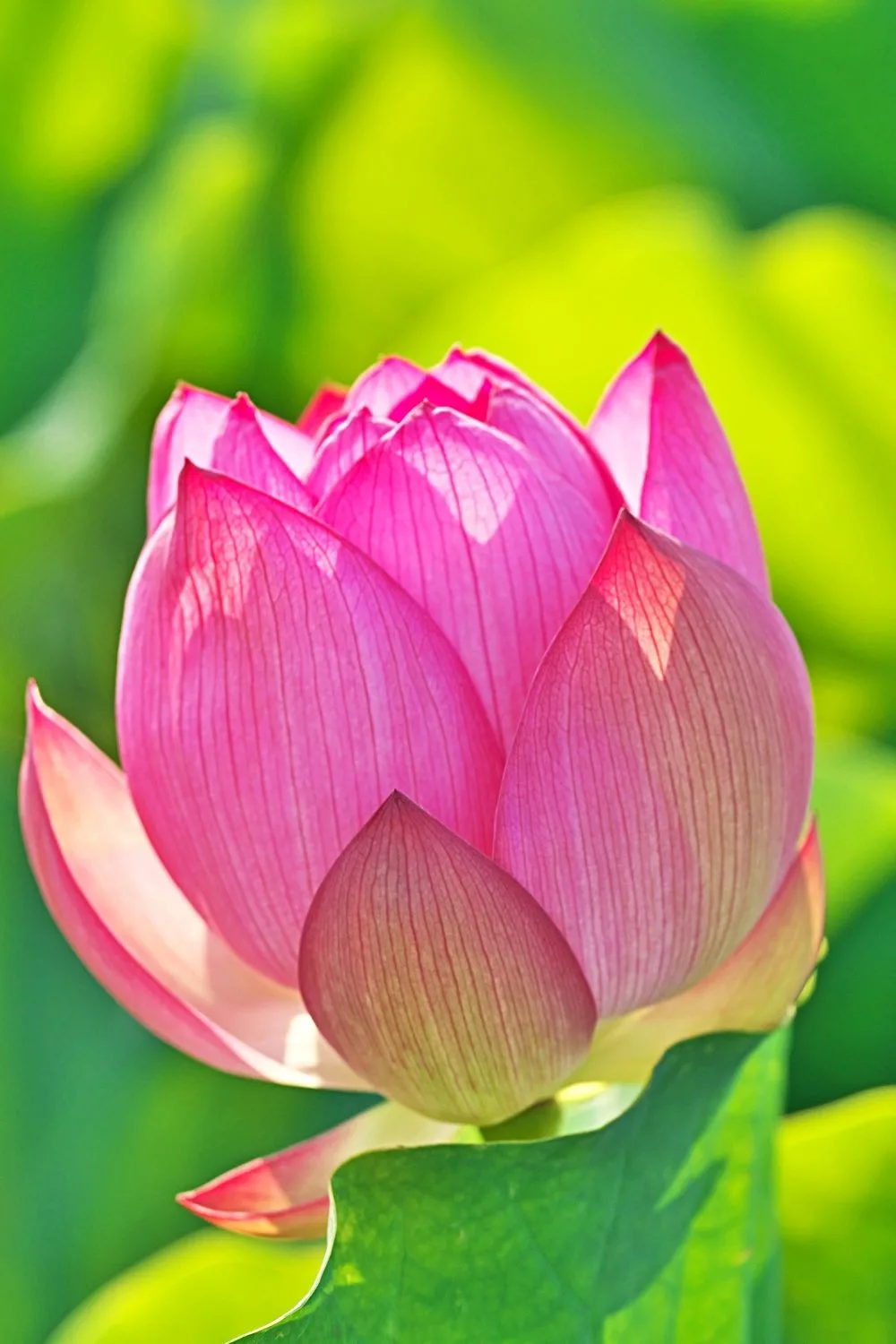
Bowl lotus is the name of the smallest growing lotuses that you can plant on your east-facing balcony
Bowl Lotus is the name used for the smallest growing lotuses. This type of Lotus plant is only different from a regular lotus in terms of size.
Its basic plant care requirements include:
- Scientific name: Nelumbo nucifera
- Family: Nelumbonaceae
- Temperature: around 65 to 75 degrees Fahrenheit (18-to-24-degree Celsius)
- Fertilizer: Use liquid fertilizers
- pH: 6.5 to 8.0
- Soil: sandy or clay soil
- Lighting: Full-sun
- Growth rate: slow growth rate
- Humidity: below 50%
Read more about Lupne plant care next.
Conclusion About Plants for East Facing Balcony
Growing plants is always seen as an impossible thing to do unless you have prior experience.
However, this is not true, and anyone who has space and a good light source can grow plants within their homes, balconies, and gardens.

Daniel has been a plant enthusiast for over 20 years. He owns hundreds of houseplants and prepares for the chili growing seasons yearly with great anticipation. His favorite plants are plant species in the Araceae family, such as Monstera, Philodendron, and Anthurium. He also loves gardening and is growing hot peppers, tomatoes, and many more vegetables.

![30 Plants for East Facing Balcony – Best Guide [2024]](https://plantophiles.com/wp-content/uploads/2022/04/30-Plants-for-East-Facing-Balcony-720x405.jpg.webp)
